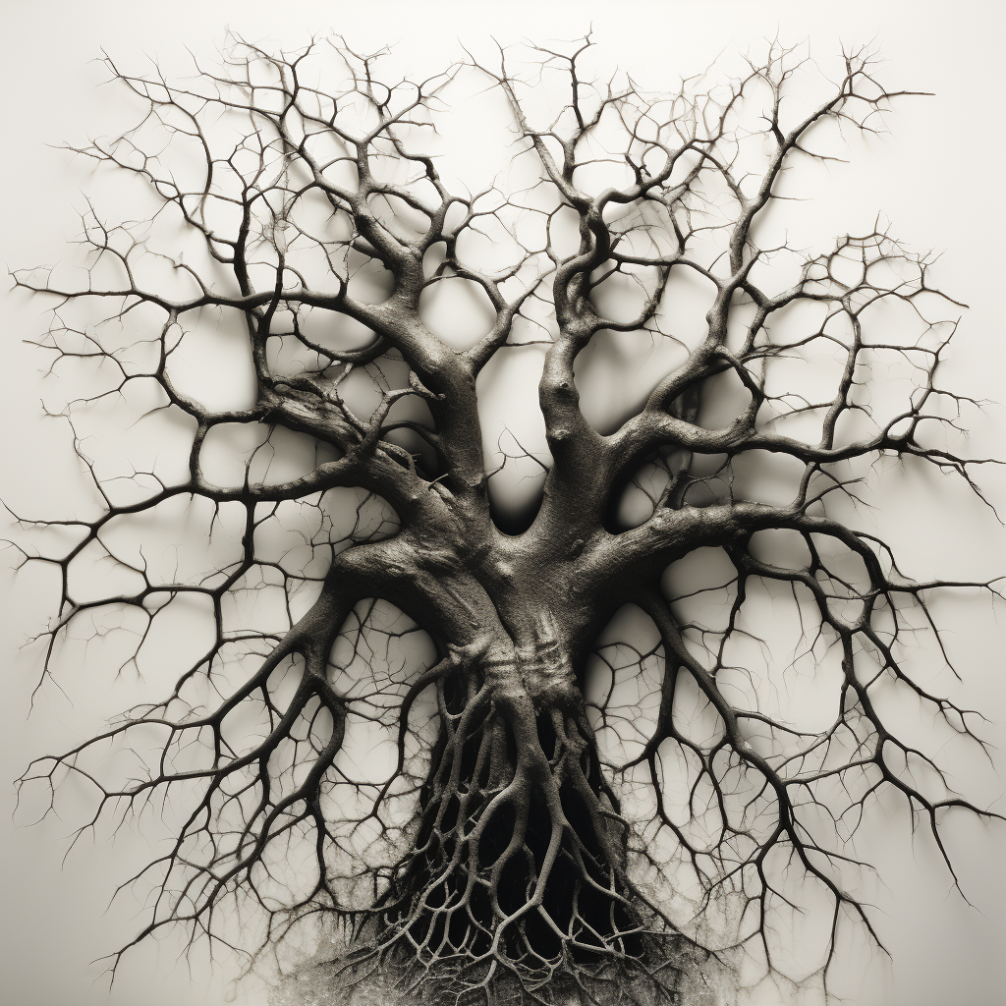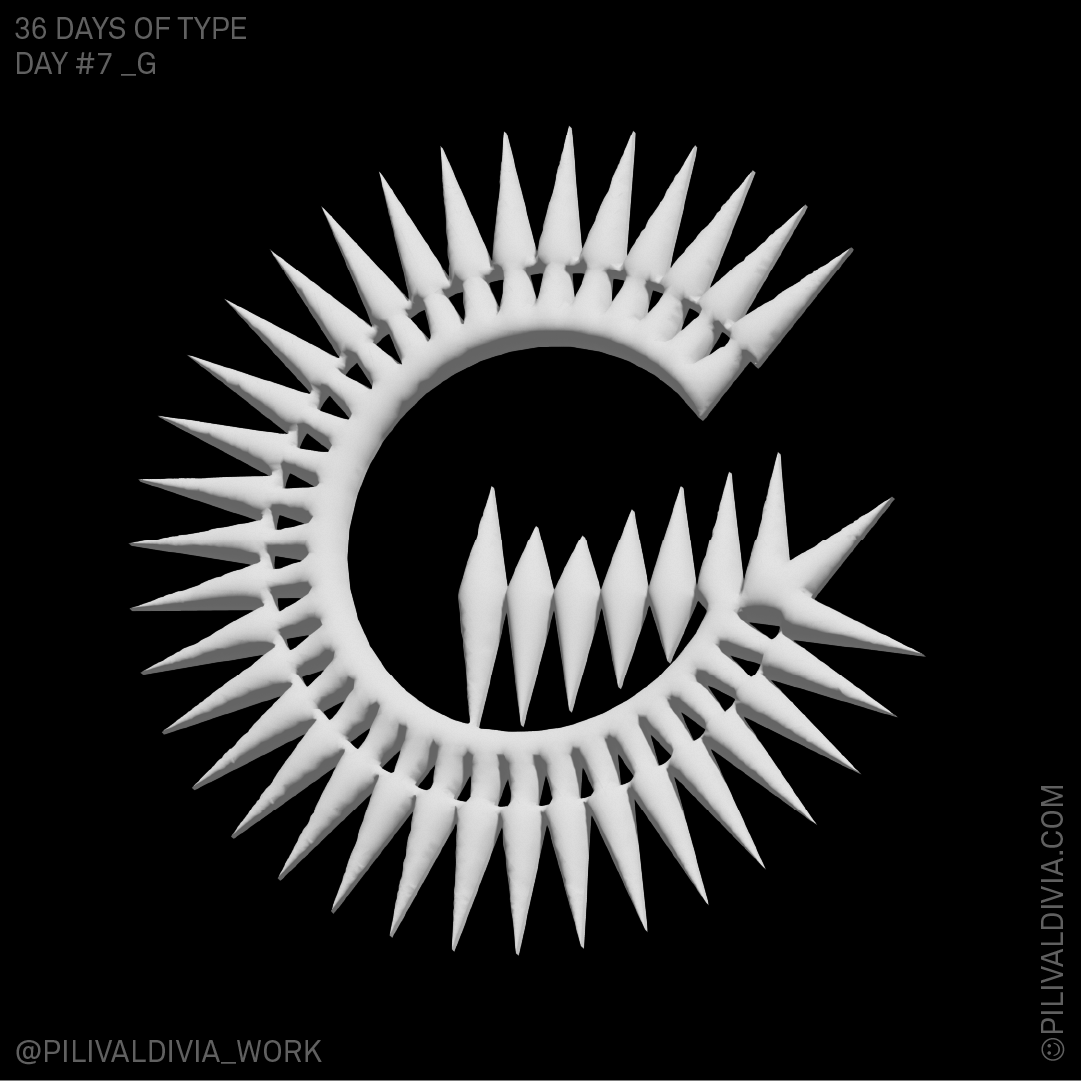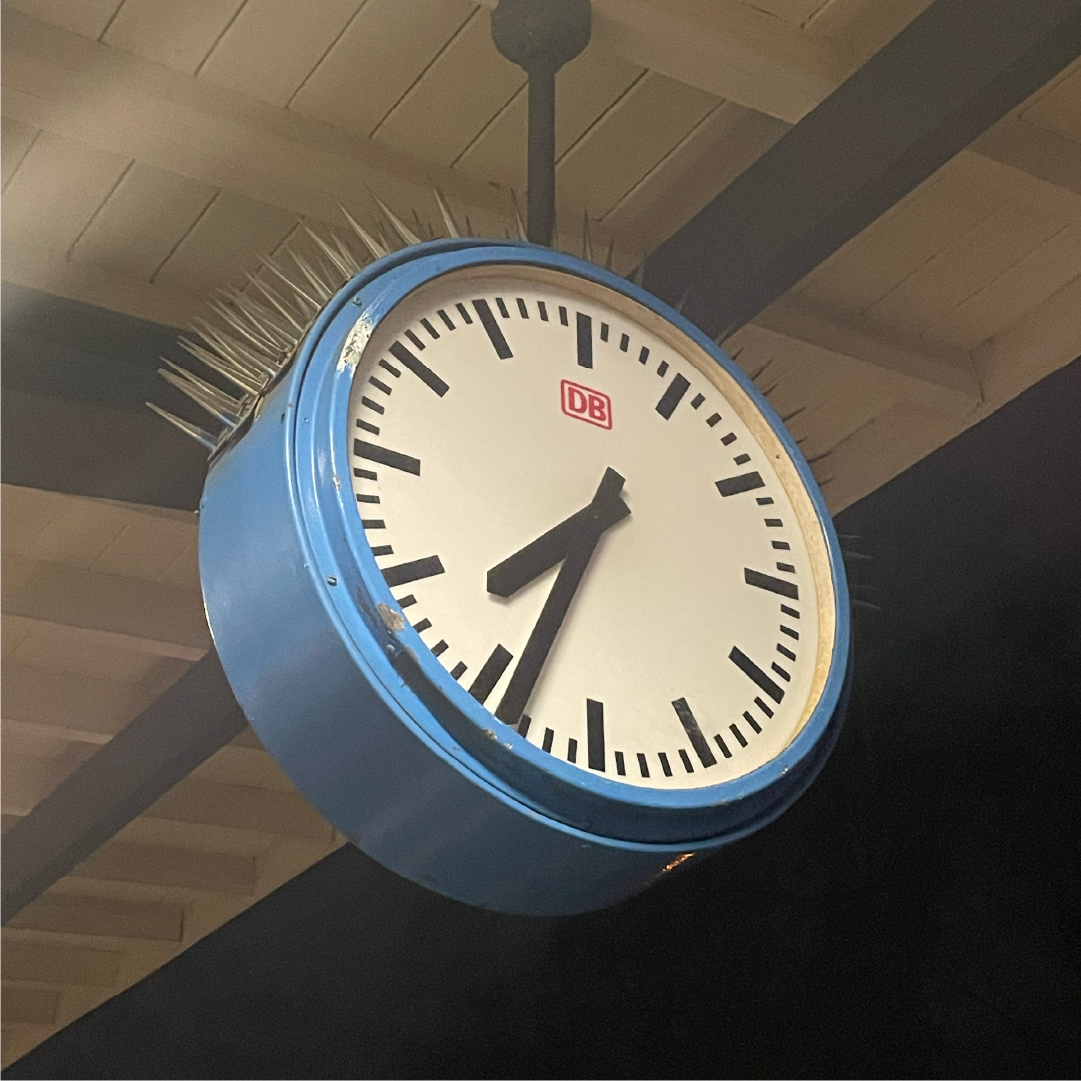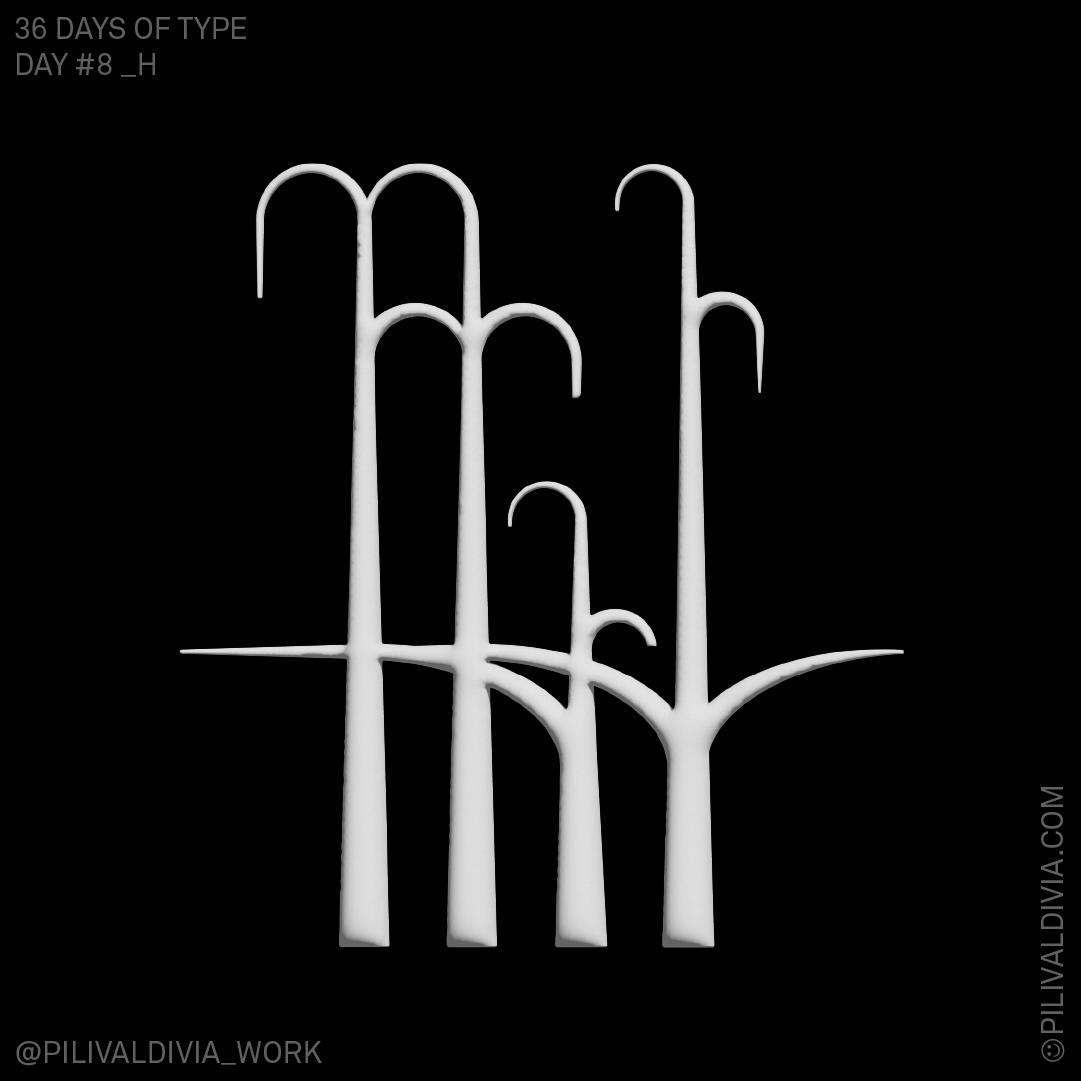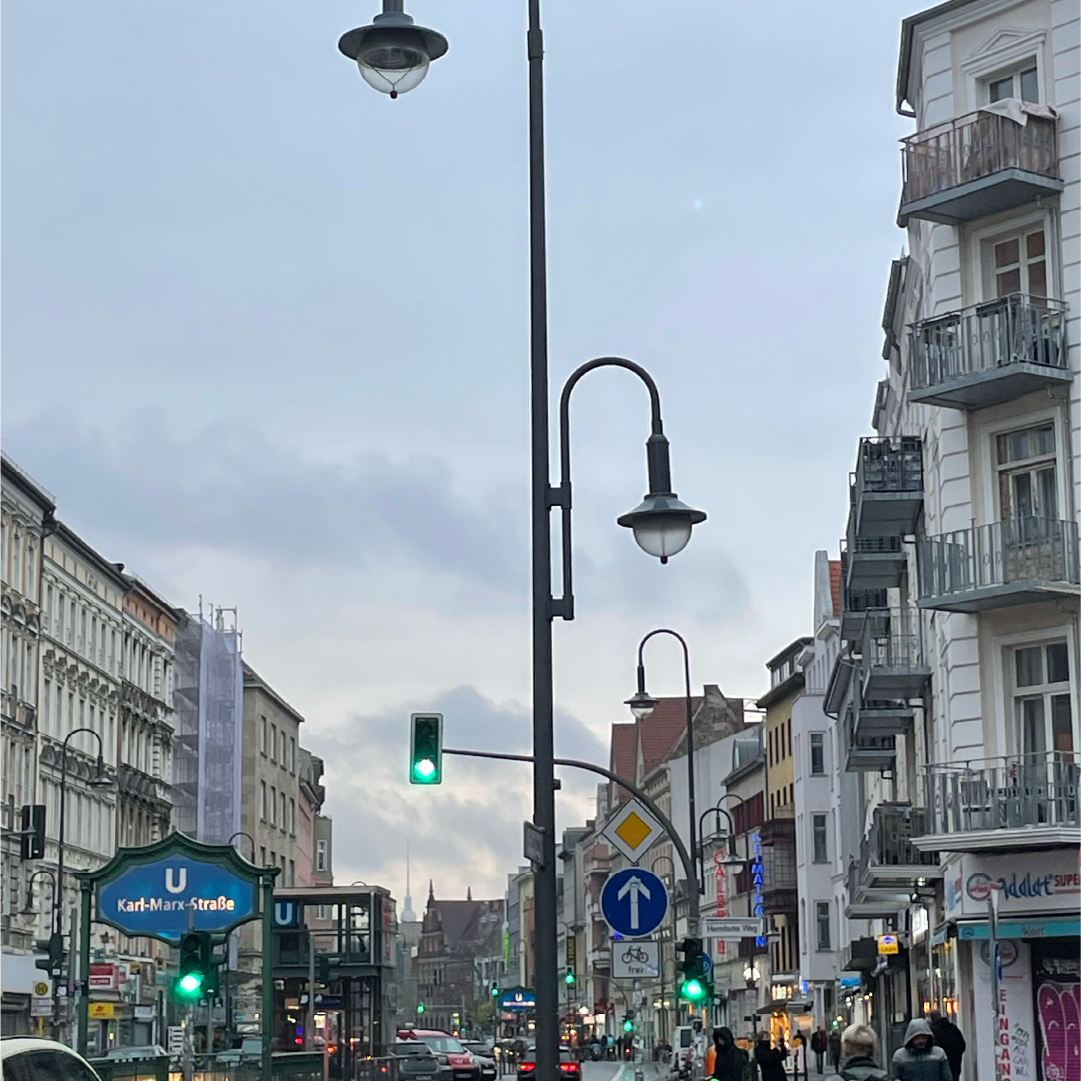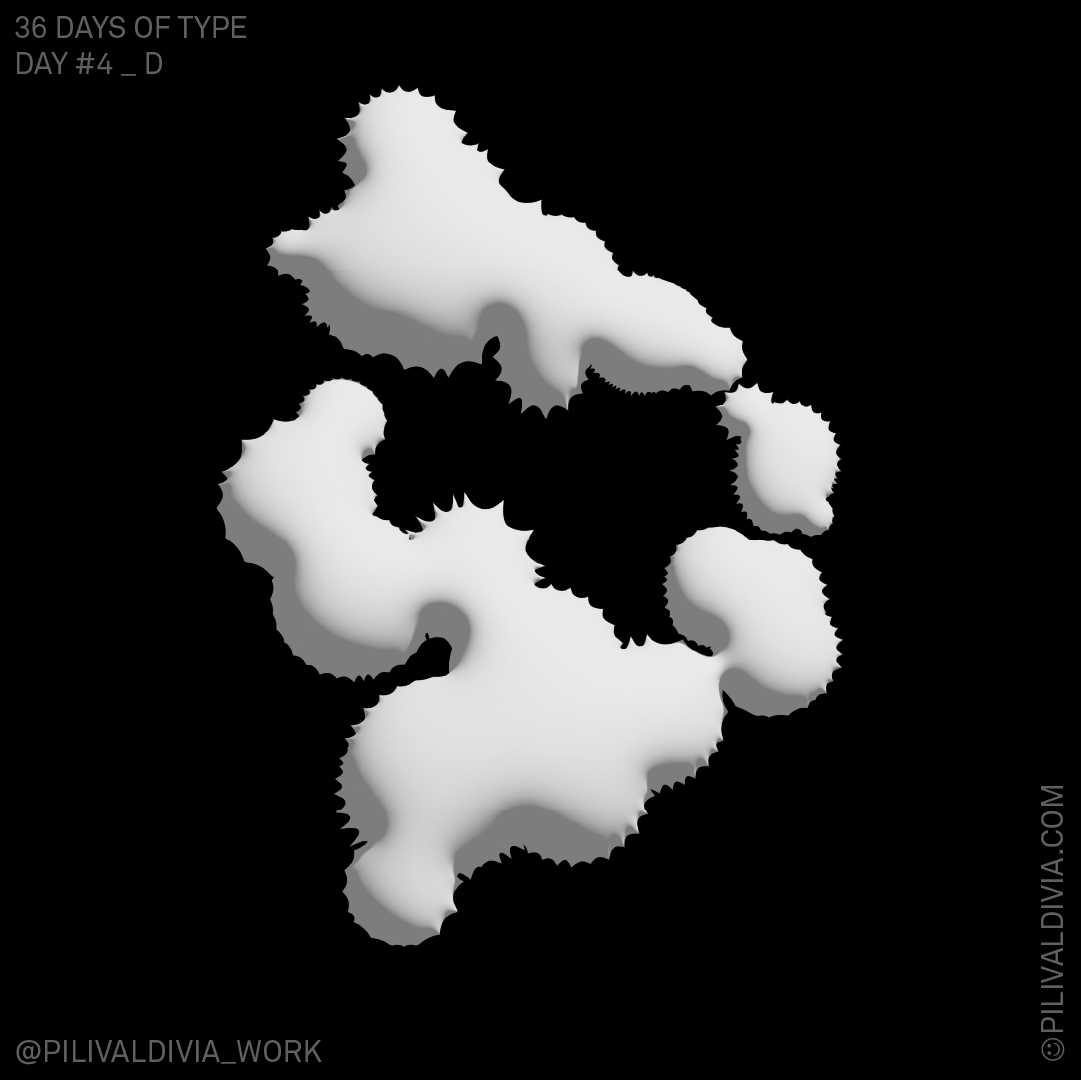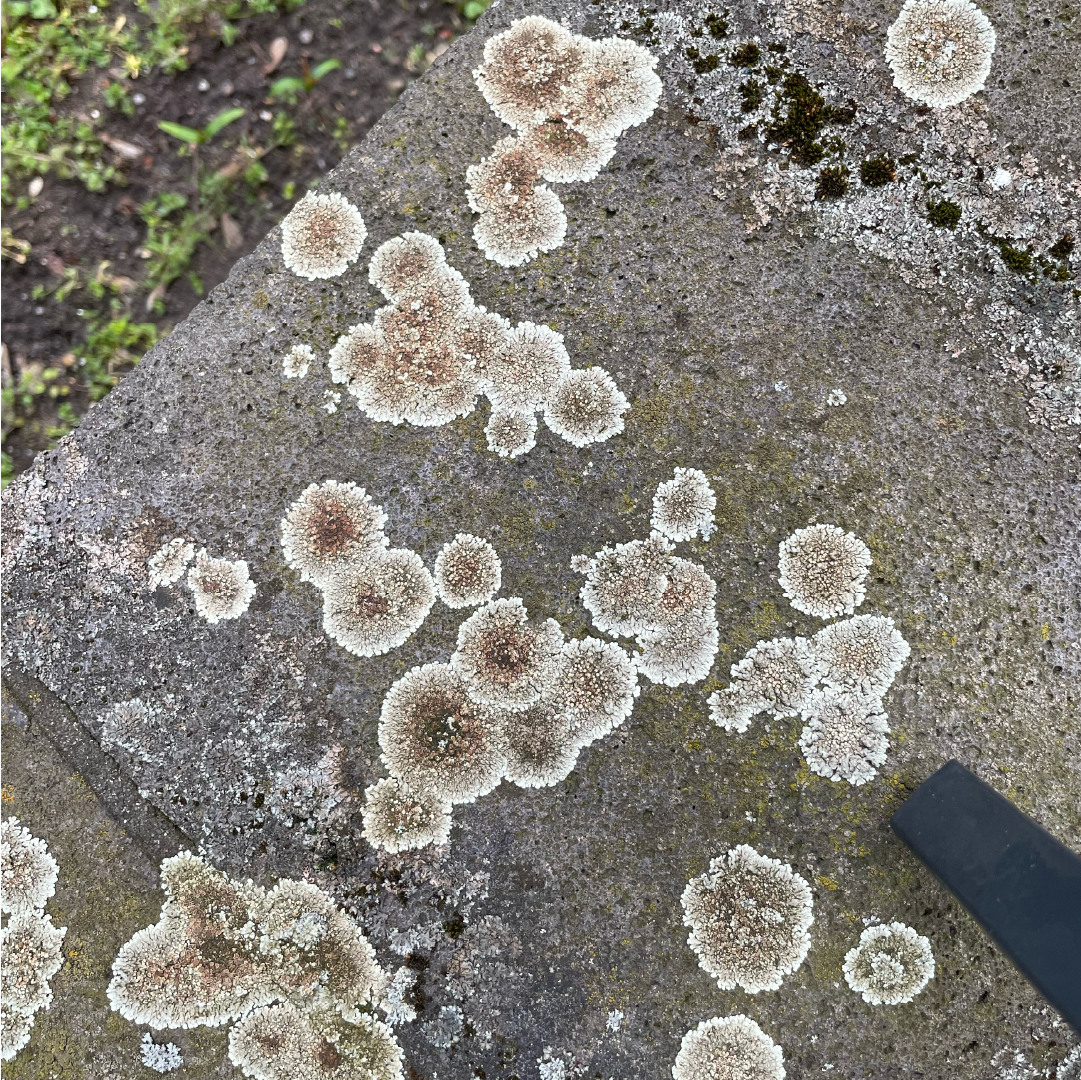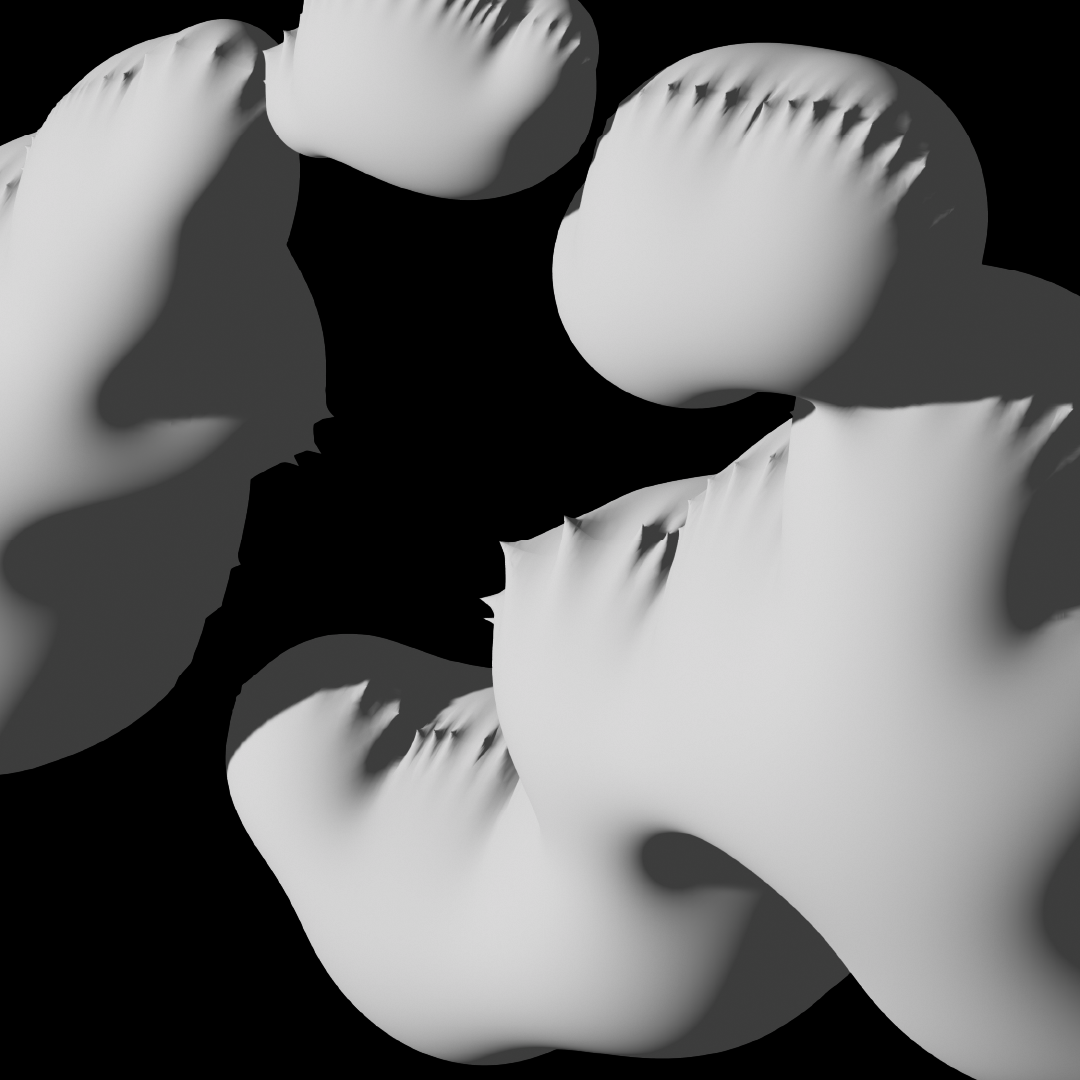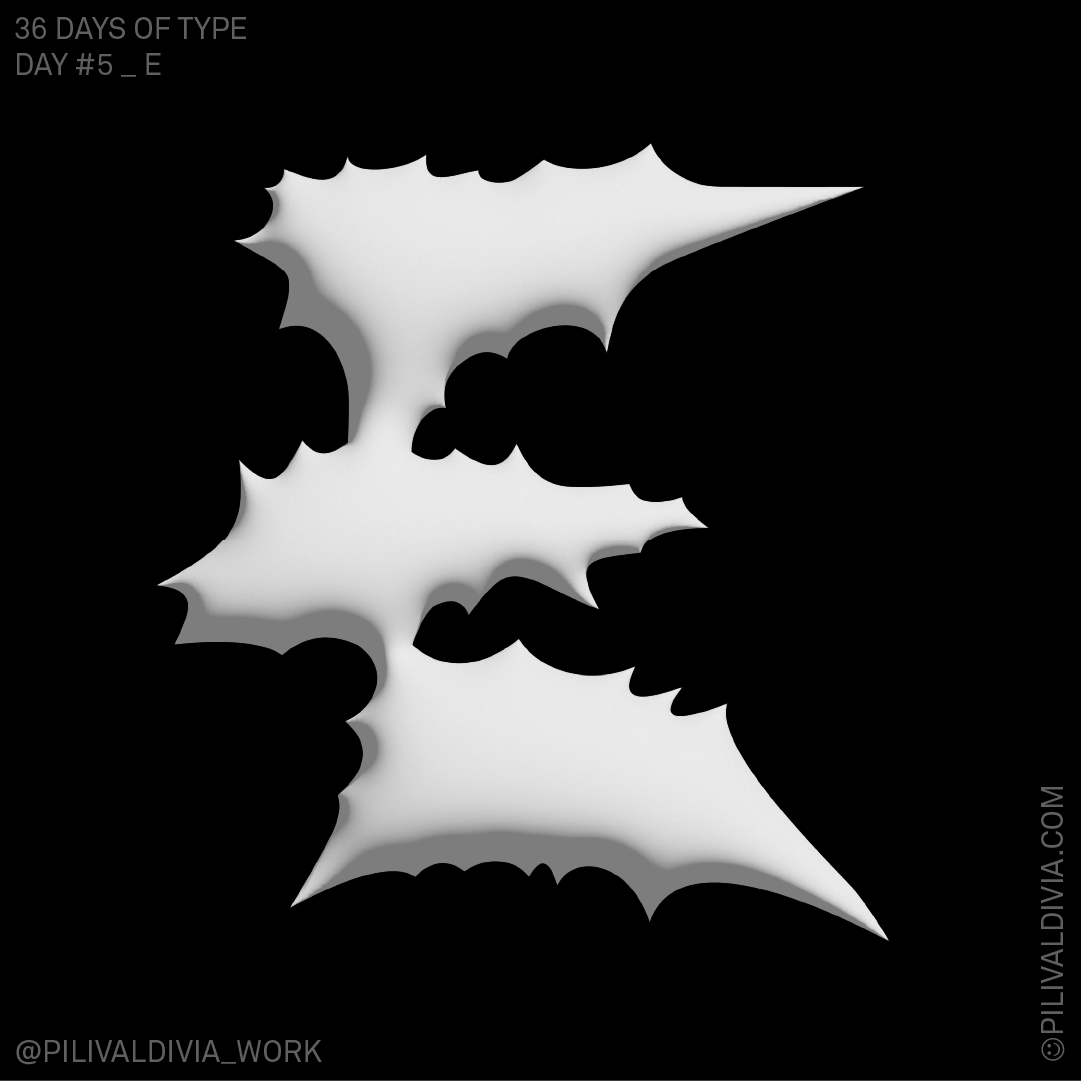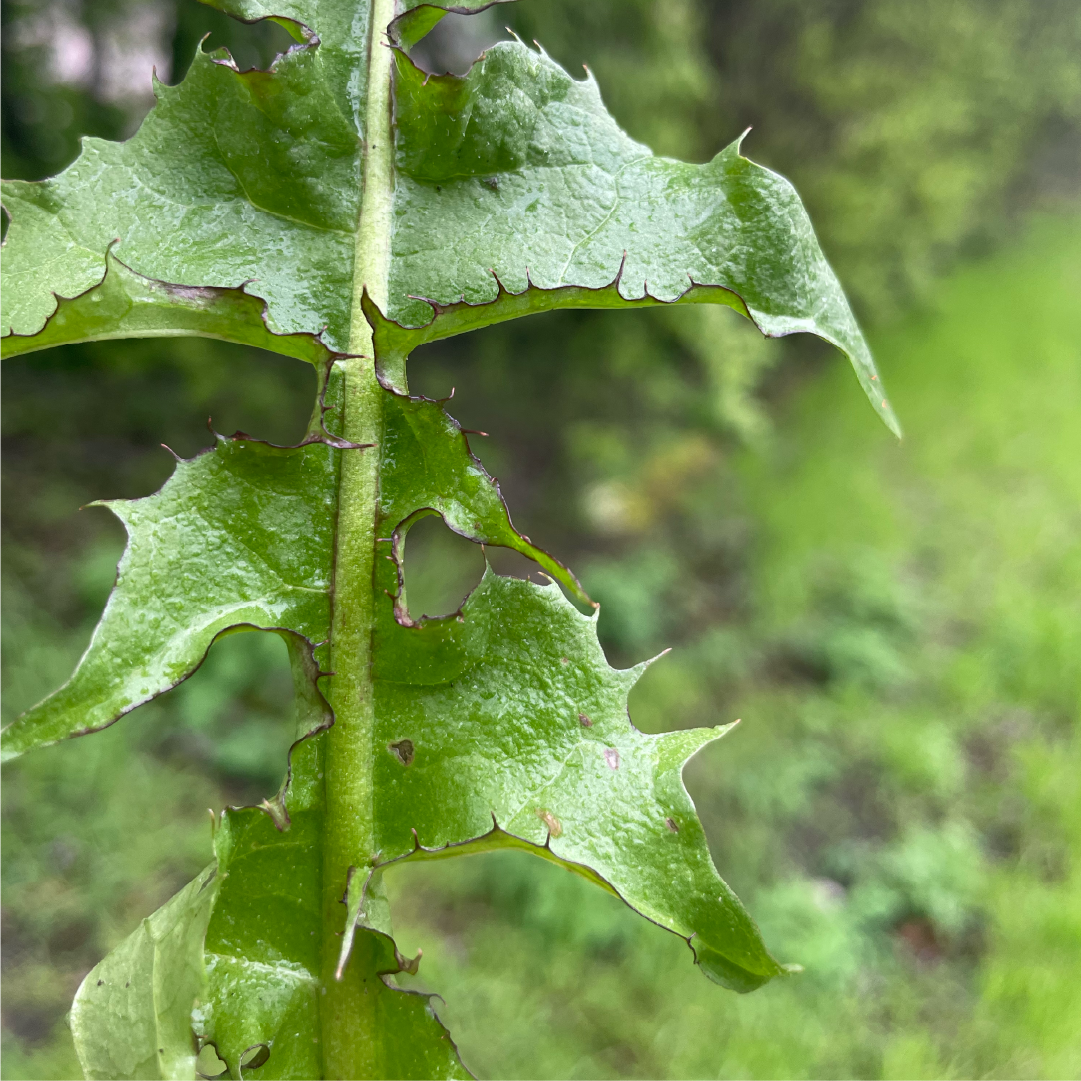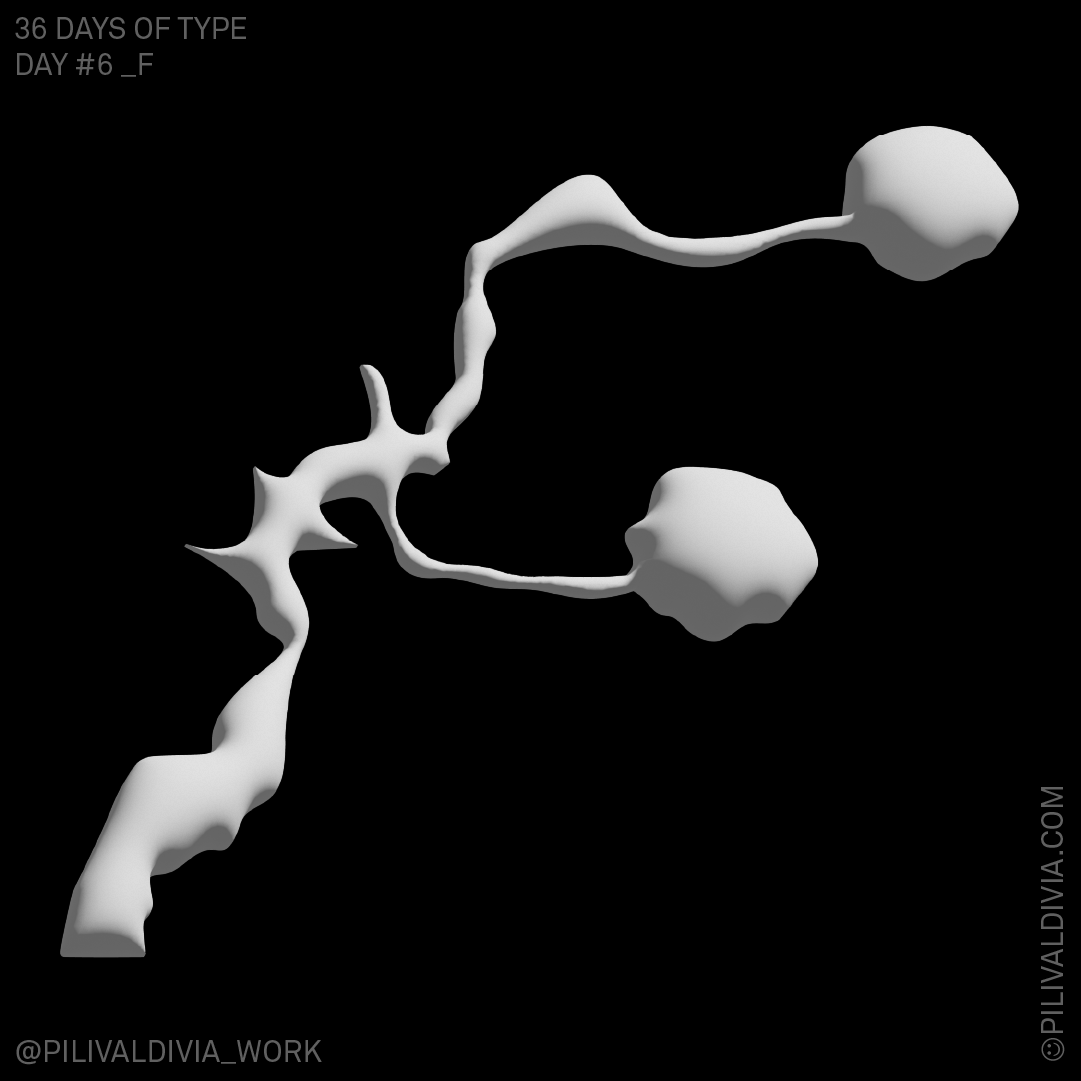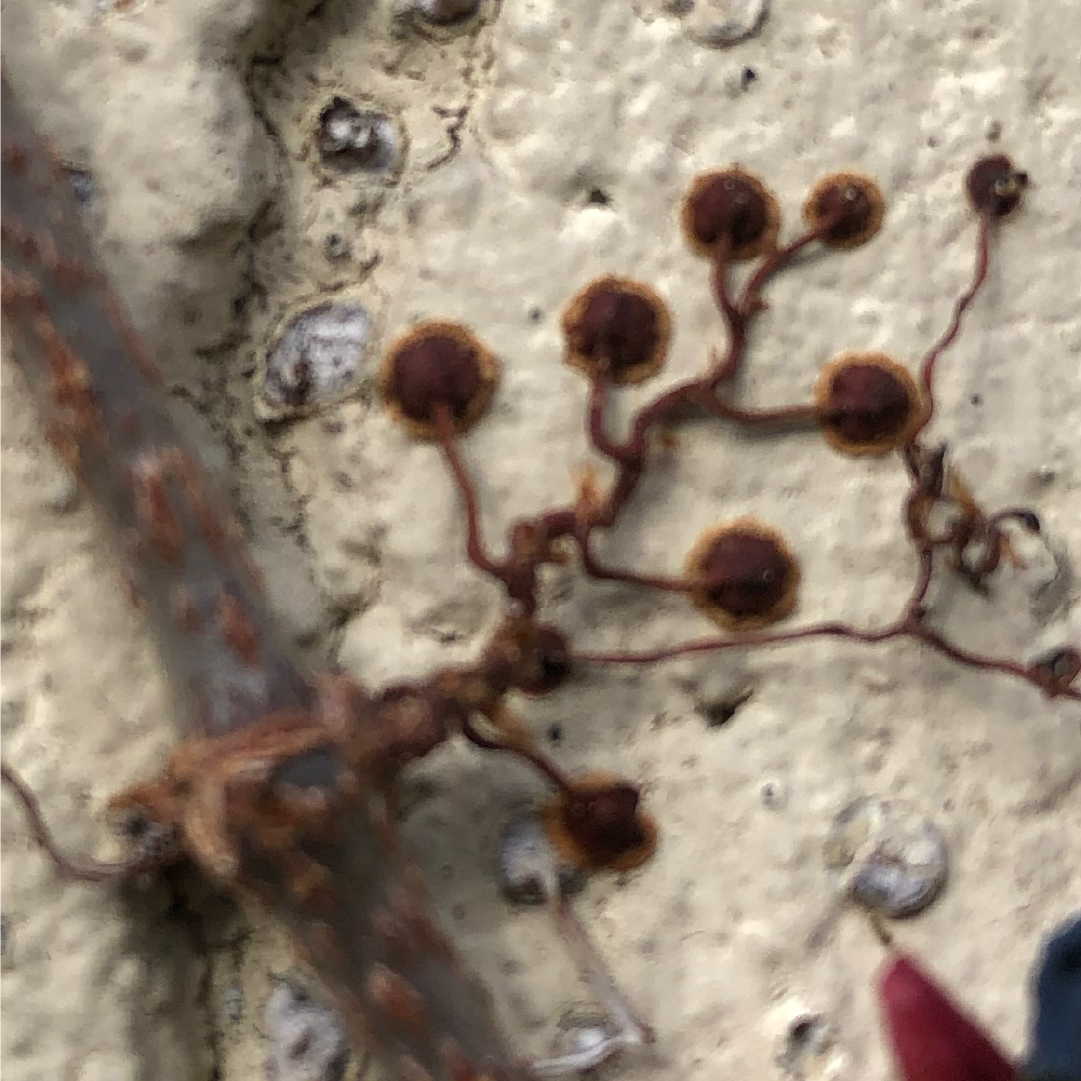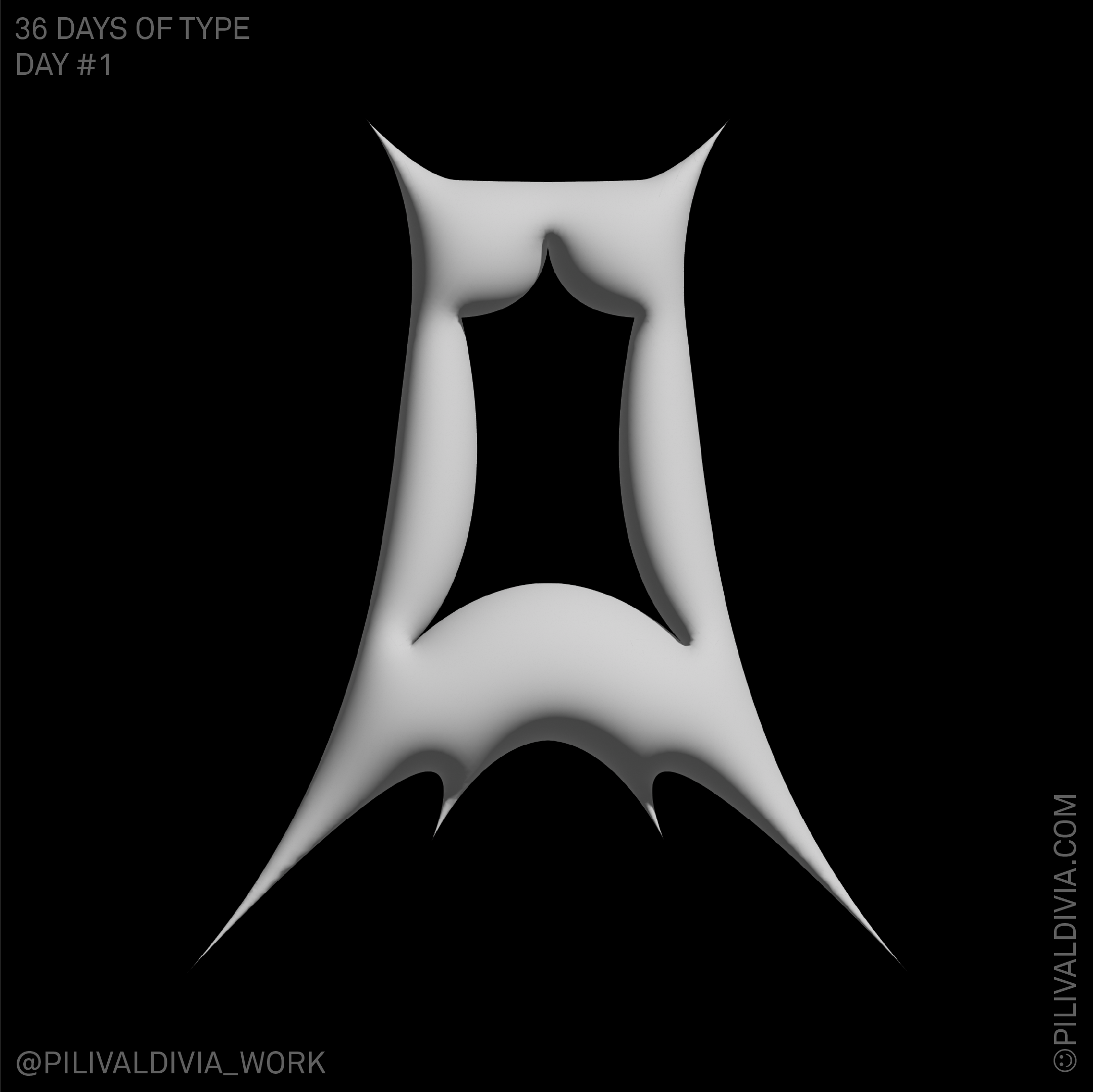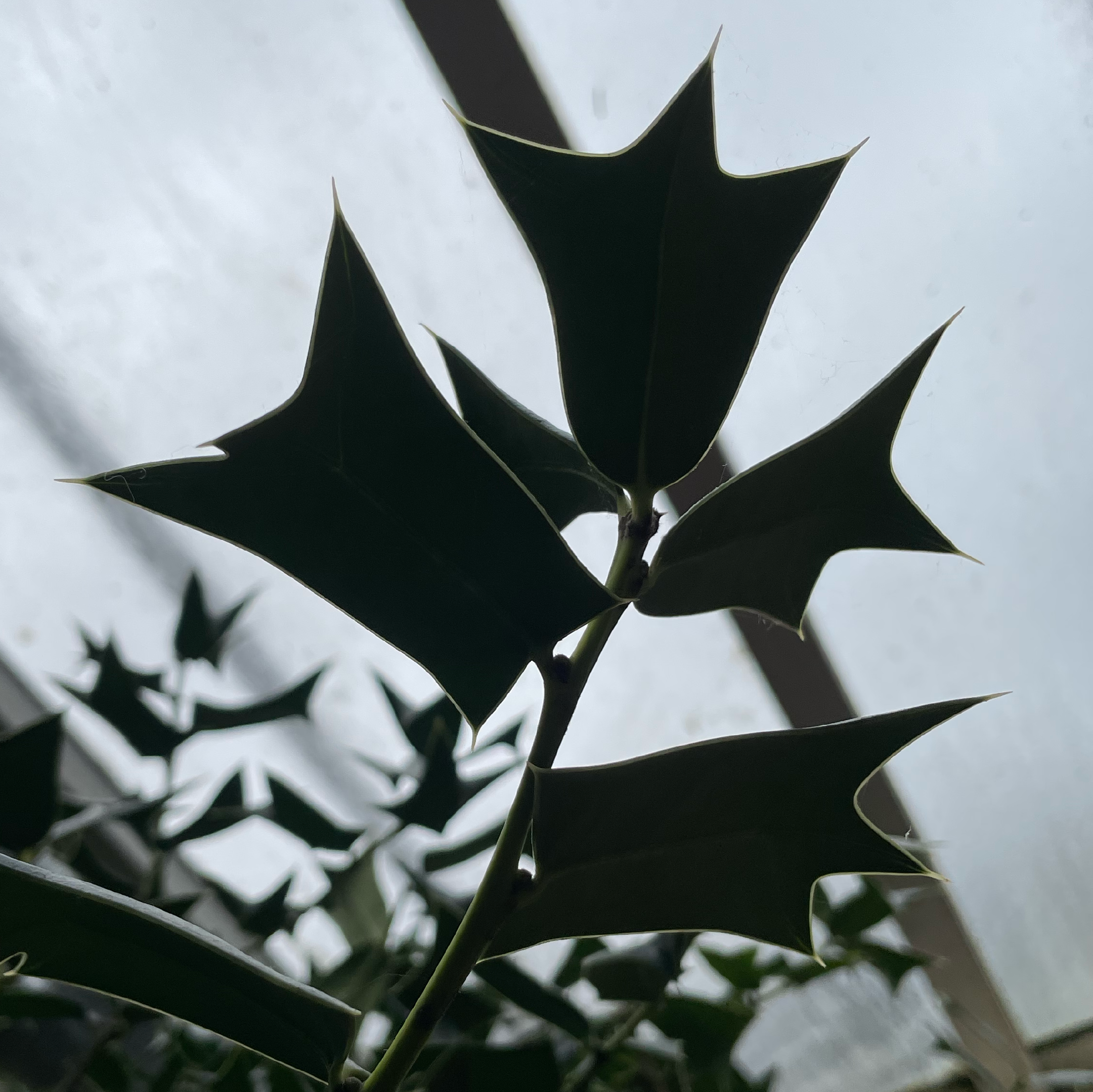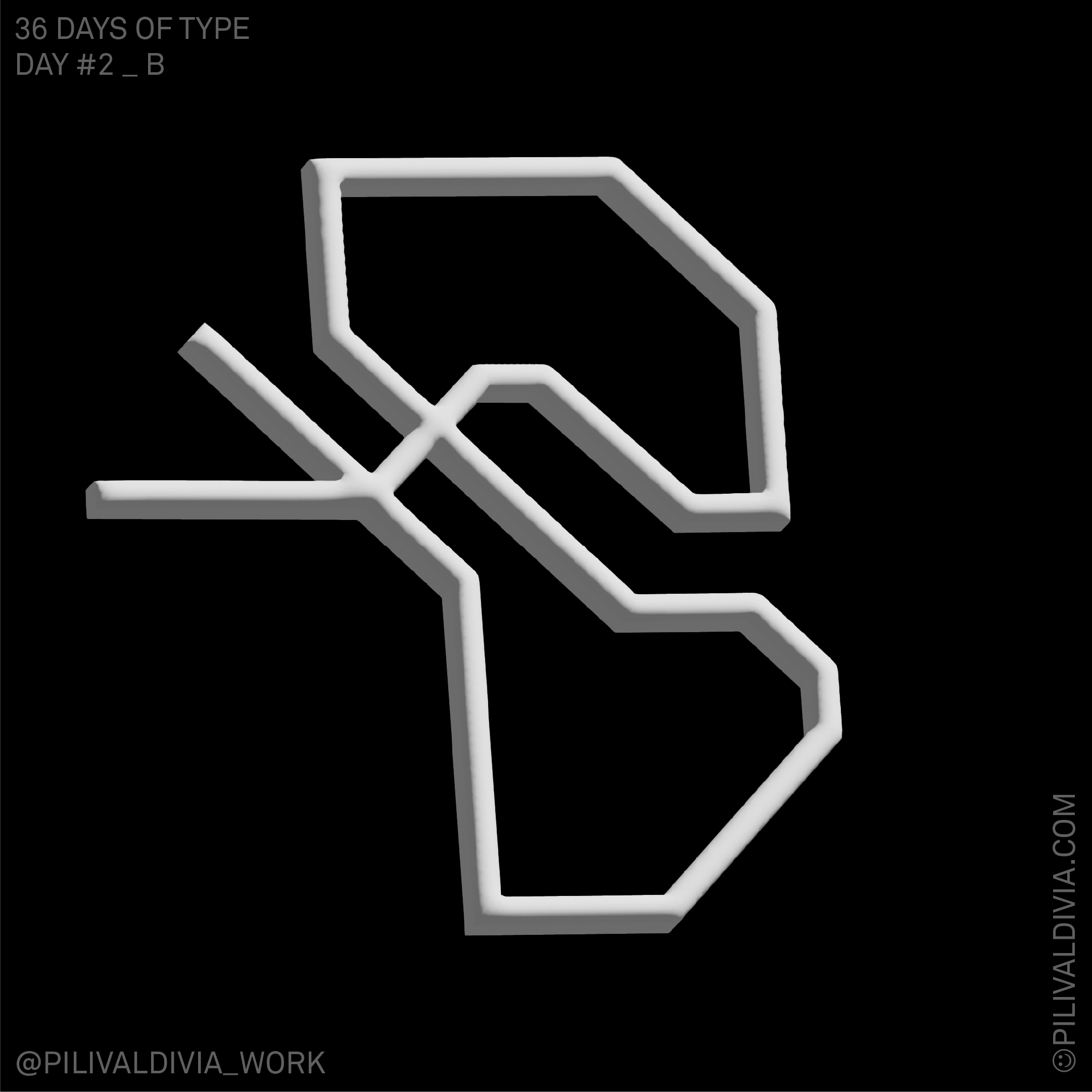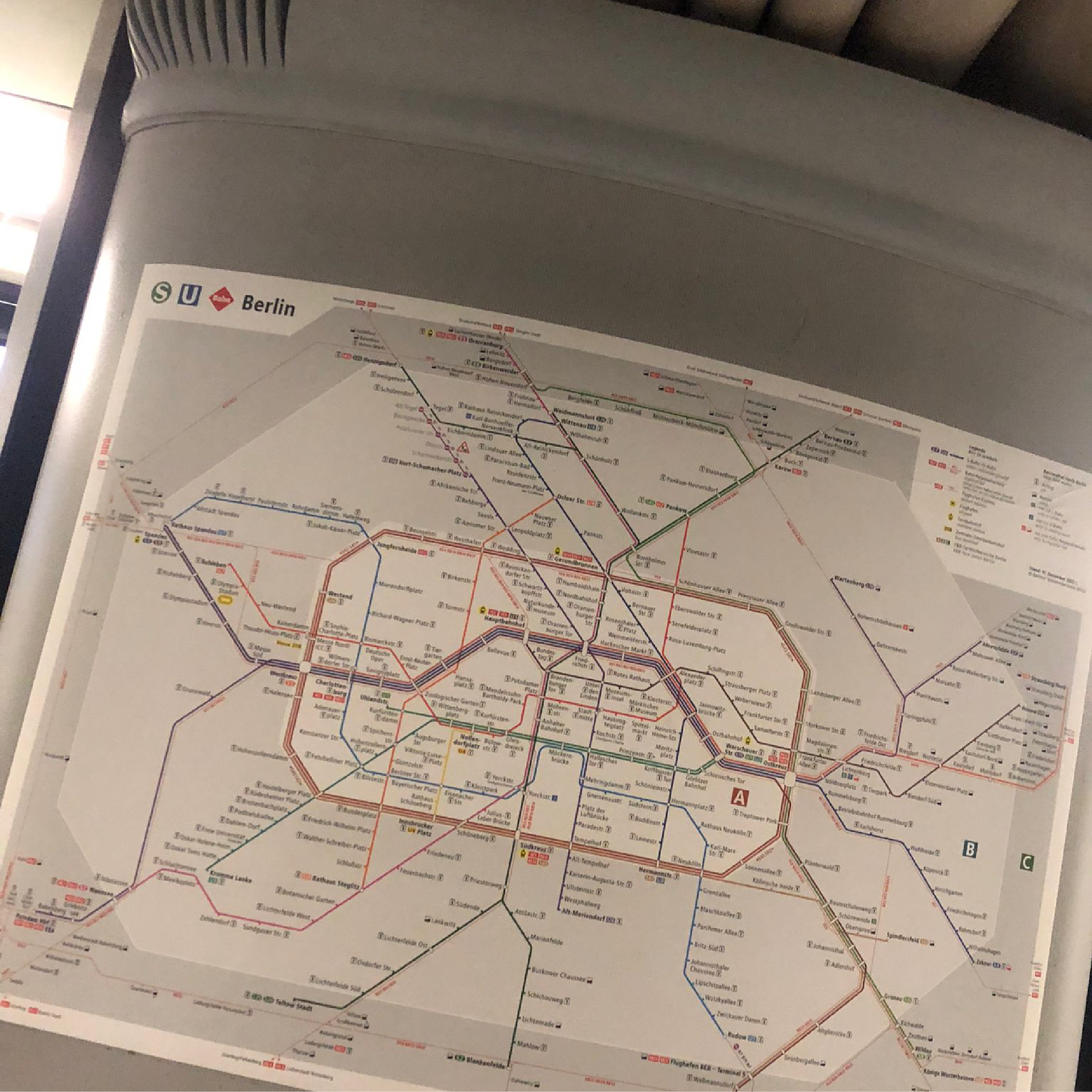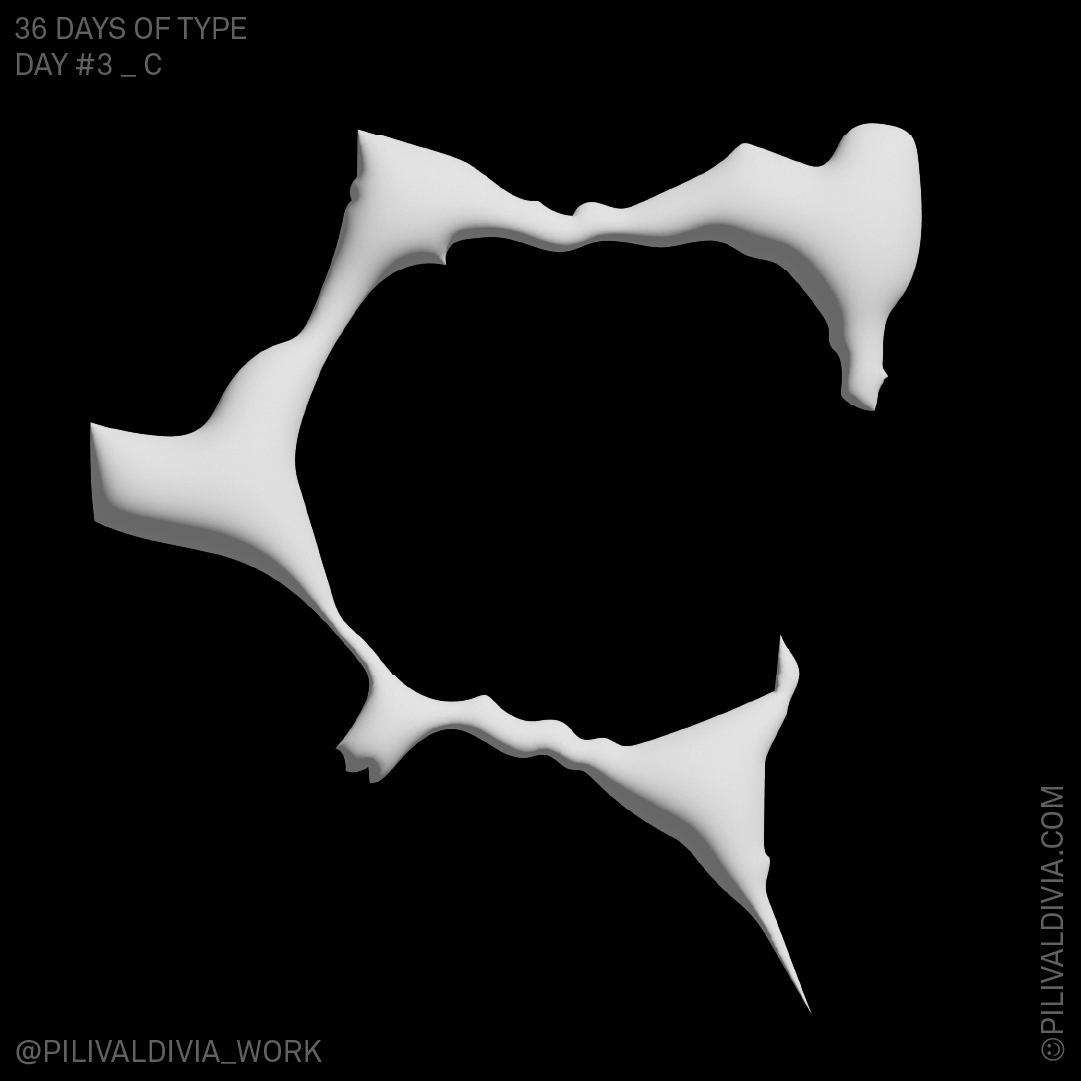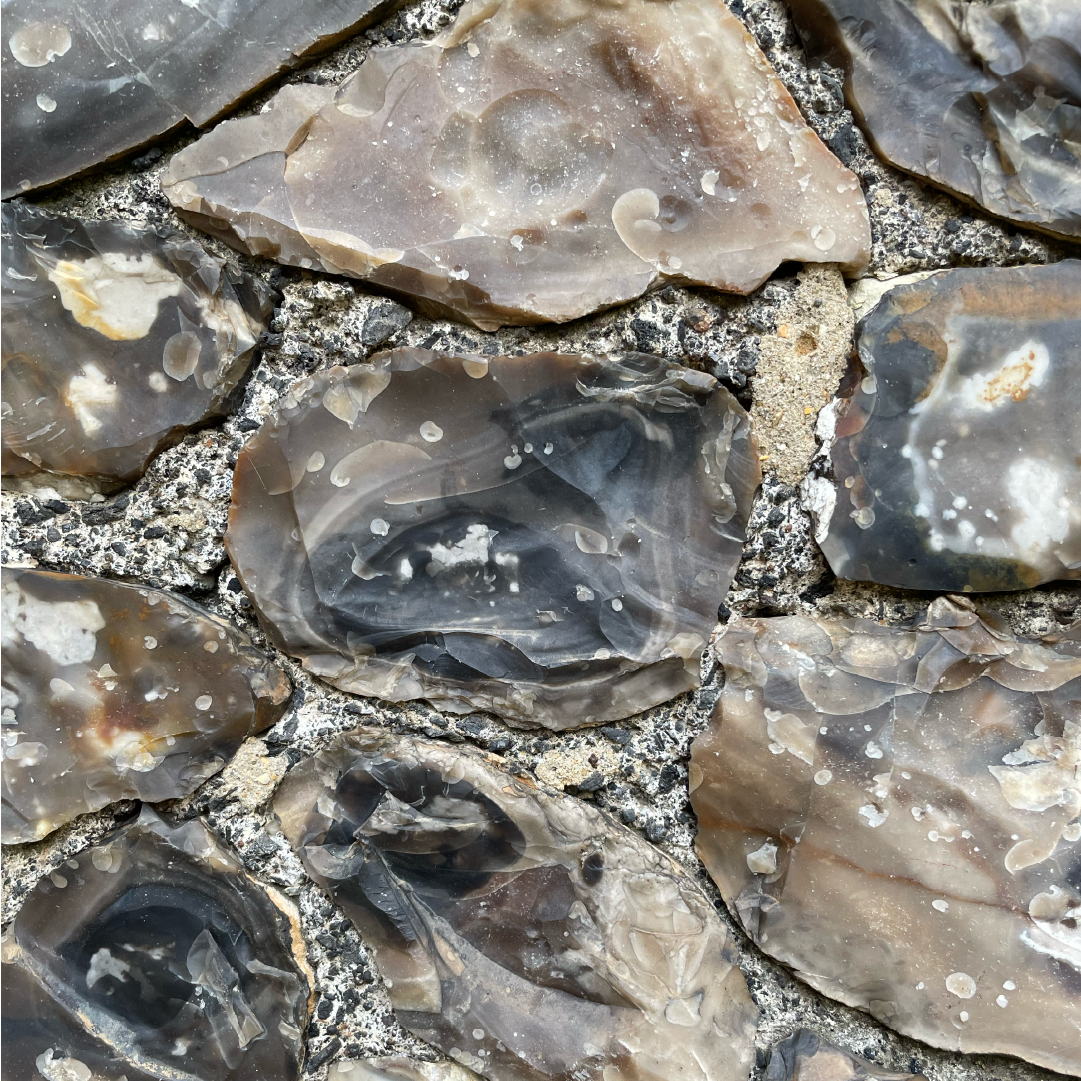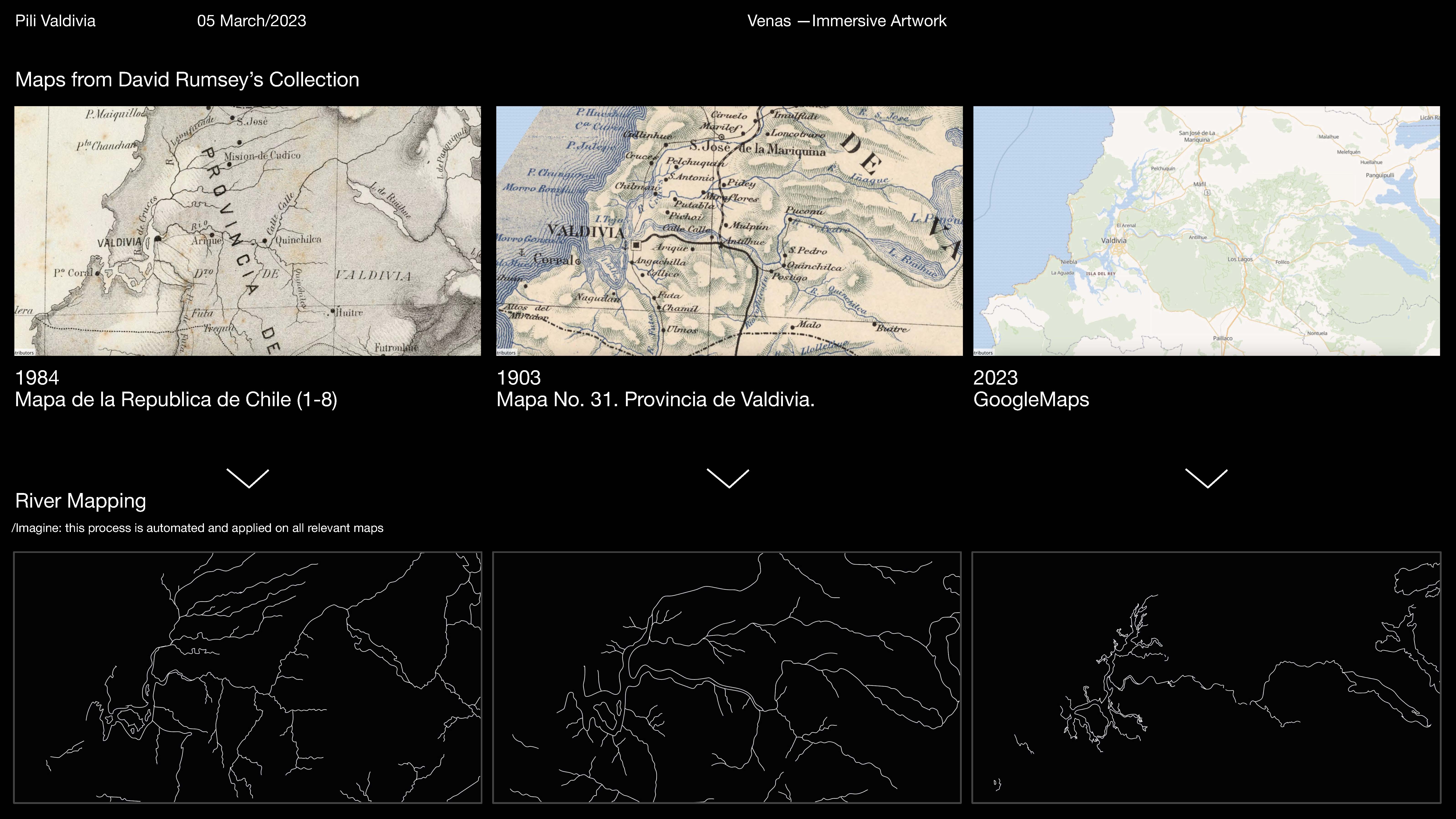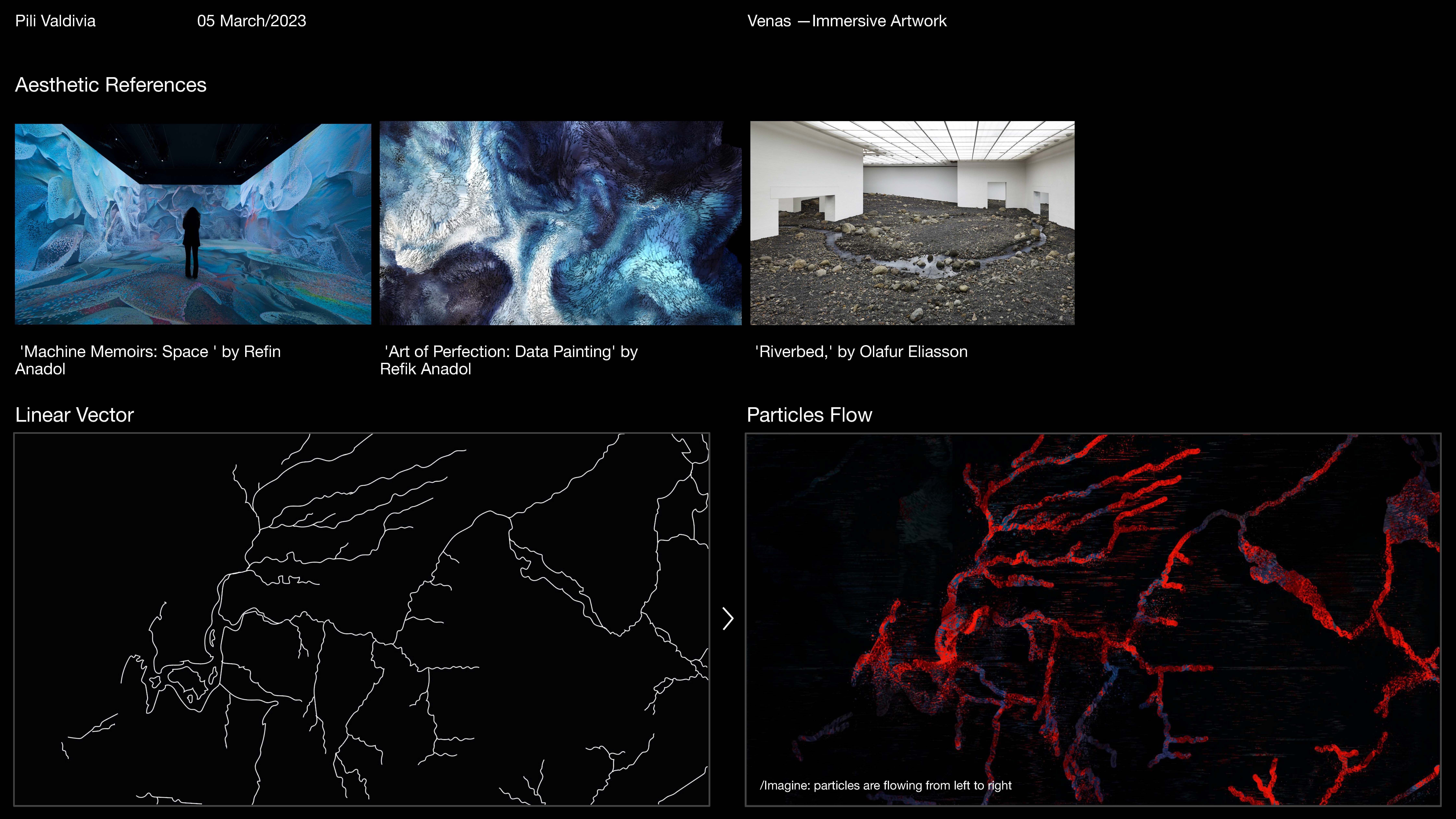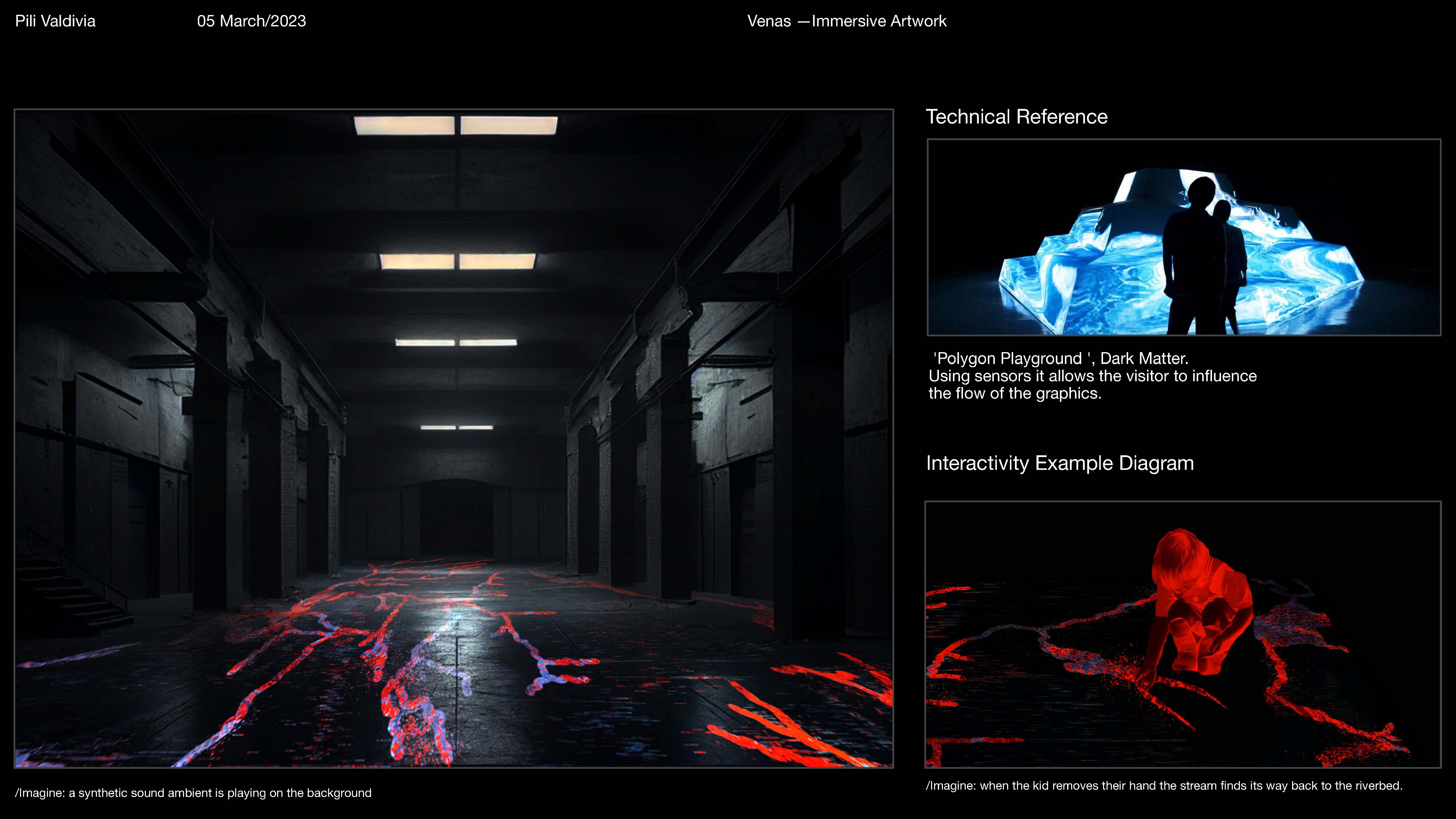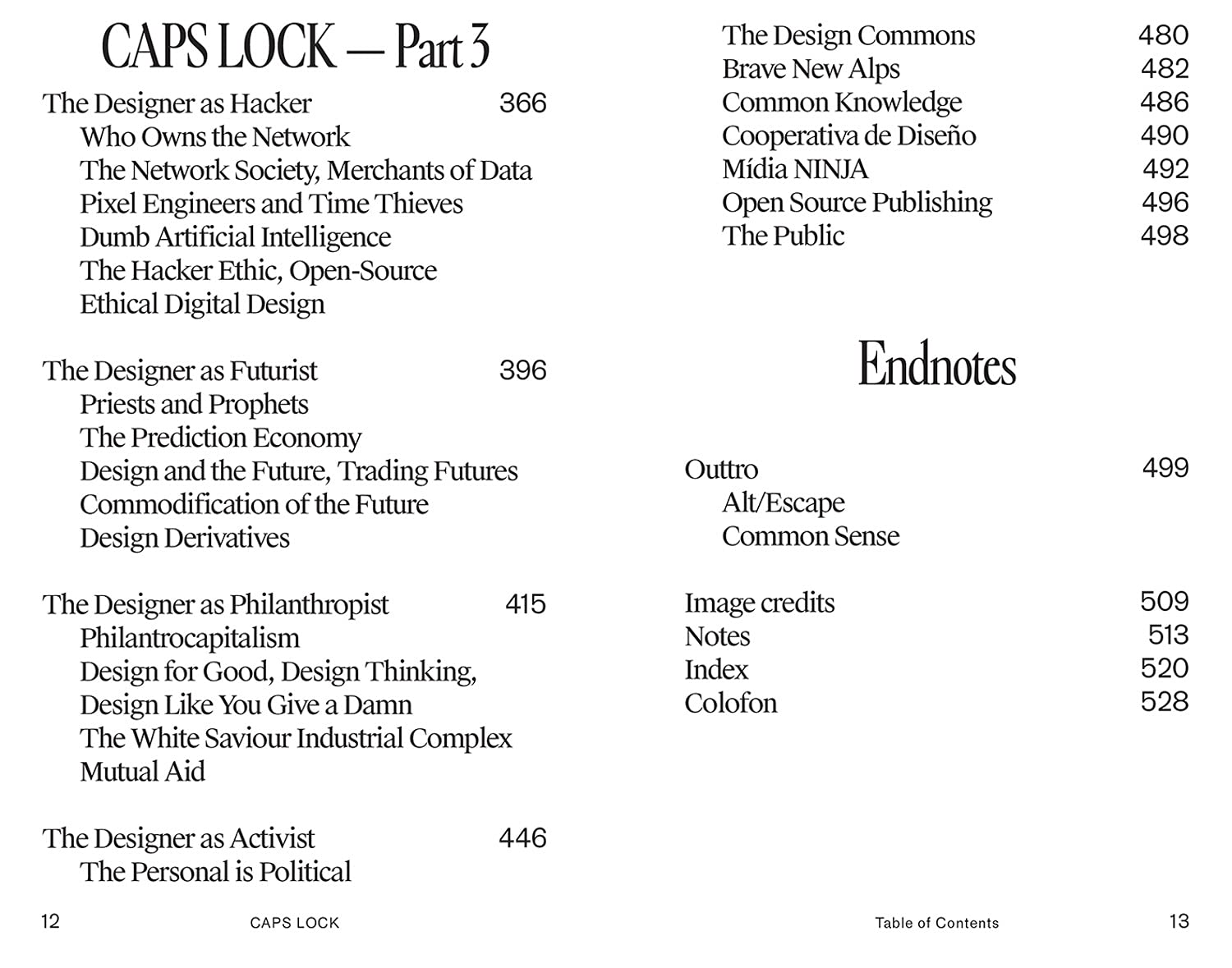Ok so:
There's what you see and what you focus your attention on;
What you hear and what you choose to listen;
What you learn and what you internalise;
What you think and what you say;
Who you meet and who you follow up;
What you experience and what you remember;
Who you chat with and who you talk to;
What you value and what you fight to protect;
There's what you are feeling and what you decide to do with what you are feeling.
And that makes the whole difference.
( 53 )
02/11/2023
( 53 )
02/11/2023
I’m deeply grateful for this course and I wish more people would take it. Beyond the readings, the slides and the curriculum, the course offered a refreshing perspective on collective growth and a rare intimate safe space within the university arena.
We leave with more questions than answers. In multiple occasion we heard each other asking things like “how do we create a space where it’s safe to try and fail?”, “how do we cope with this uncertainty and with the weight on our shoulders on having to fix the world?”,“how do we make people understand?” or, “how can we make them hear, when they don’t want to hear?”
To finish, I want to reflect on the beauty of the process. A process of becoming others. Of evolving, growing, failing and starting over and over again. As we become more knowledgable on this social issues, as we learn theory to support our ideas and increasingly improve our critical skills, there’s a big risk of becoming also increasingly judgemental, less tolerant towards people that don’t reach our so called ethical or moral standards and a lot of times more pessimistic and cynical of society.
It’s no longer enough for someone to be a queer ally, but they cannot use the argument “they are born this way” because it doesn’t acknowledge the fluidity of sexual orientation. It’s not enough for someone to want to help poor people in Africa but they need to do it in a way that promotes mutual aid and that challenges the white saviour complex. It’s not enough for someone to recycle and take care of their animals, but they need to question why they claim ownership over another living being in the first place.
It’s easy to become an ethical-moral police and to forget the weight of people’s backgrounds, up brings, cultures and individuality. And it is also easy to forget your own process and evolution. But recognising how much we have grown can give us hope for others to do it as well, and to remember how we used to be (and sometimes still are) racist, homophobic, xenophobic, anthropocentric, patriarchal too, can help us be understanding and compassionate towards people that might be in a different part of the journey and towards our own selves when we fail on this quest of becoming others.
I do think there are certain behaviours we can not tolerate and that there’s a line that needs to be drawn to establish the bare minimum for a respectful human (and non-human) interaction. But I also think that a lot of times people have good intentions but not enough knowledge or positive examples around them and I have found it useful to recognise and celebrate my own progress and to remember where I started in order to stay humble, compassionate and hopeful instead of judgemental, isolated or cynical.
( 52 )
11/10/2023
# Critical Issues
Week 5 - Part 2
As Donna Haraway propose, there’s a biblical relation to speciesism and species hierarchies. And as a part of my catholic upbringing and many other values in western culture, I’ve inherited this species structures that I have yet to unlearn. When I think about the old Testament I remember Adan and Eva passage, and the role of the snake, being the most abominable animal of them all, the incarnation of evil itself. On the opposite side of the spectrum are the lions, the king of the jungle. This animal was chosen by C.S Lewis to represent God in his series Chronicles of Narnia. It’s not only about placing the human species above all other animals species but also about classifying certain non-human species in different groups that get different treatment in the face of equal interests. Treating dogs and cats with love and respect while eating cows and pigs; killing spiders and moths with no regrets while defending bumble bees, intoxicating rats while feeding squirrels and so on.I didn’t know the term speciesism until now. Nominating and labelling this form of discrimination is certainly the first step to start fighting it. For all of my life I’ve been a speciesist without even knowing. And yet I knew I could do better in remembering that everyone’s suffering matters. When deciding what to eat, how to entertain myself, what subjects to use in my art, how I influence the ecosystems around me, where do I put my trash I can decide to fight speciesism.
And if it’s not enough to do it for the rights on the non-humans, there’s another aspect I found interesting, and it’s that I believe that the part of my brain I exercise when I discriminate pigeons as opposed to house sparrows, is the exact same part of my brain I’d use to discriminate one ethnicity over the other, one gender over other, one age over other, one body over other. I do think that practicing consideration and justice and equality towards the smaller and most vulnerable individuals can prevent us from using our human power in abusive ways.
( 51 )
05/10/2023
# Critical Issues
Week 5 - Part 1
“Human genomes can be found in only about 10 percent of all the cells that occupy the mundane space I call my body; the other 90 percent of the cells are filled with the genomes of bacteria, fungi, protists, and such, some of which play in a symphony necessary to my being alive at all, and some of which are hitching a ride and doing the rest of me, of us, no harm. I am vastly outnumbered by my tiny companions; better put, I become an adult human being in company with these tiny messmates (When Species Meet, p. 4).” ― Donna J. Haraway, When Species MeetDuring last summer, while I was leaving in a shared apartment in Berlin, I had some unexpected visitors. Every morning a couple of pigeons would come to my balcony and coo next to my ear starting 7 am. I soon realised the female pigeon (we named Julia) was nesting in my precious balcony. She would cut my plants with her beak together with Julio (her big boy), so every day I would take a broom and wipe the few branches she managed to gather down the building. I have never experienced such a hate towards another species as I did towards Julia and Julio. I tried everything I could to get rid of them, I bought a fake hawk, I hanged mirrors, I sat out there for hours with a water gun and shoot at them every time they would approach my territory. I even played with loud speakers the sounds of predators in YouTube and earned some weird looks from my neighbours. Alongside Julia and Julio would come some other small cute birds which I would welcome gratefully. Why? Why did I hate pigeons while being so fond of swallows or house sparrows? Speciesism is yet another form of discrimination but it’s so commonplace and so pervasive that oftentimes we barely even see it.
( 50 )
04/10/2023
# Critical Issues
Reflection on the they/them prompt
Normalising pronouns sharing and using inclusive language for me is ultimately about being empathic. We don’t need to understand non binary, gender fluid, non-gendered or trans people. We just need to know that there’s a group of people that feel extremely uncomfortable and deeply suffer every time someone refers to them assuming their gender and doing it wrong. We don’t need to understand homosexuality, bisexuality or pansexuality to know there’s a group of people that feel uncomfortable and deeply suffer every time someone assumes the gender of their partners or potential partners and do it wrong. And this is enough reason for me to try incorporate inclusive language in my vocabulary.( 49 )
29/09/2023
# Critical Issues
Week 4 - Part 2
Another interesting aspect I take from this specific lecture was the concept of safe space guidelines. This is something I never really payed attention before but I can now see the value of them to set the standards of an specific interaction, recognise privileges and biases by humbly announcing them, and also giving the counterpart of said interaction the right to know this information before hand and freely decide how to proceed.Paying more attention to this concept I now see how people and spaces I respect and perceive as “ethic” or “kind” oftentimes announce these guidelines in their publications or performances. Many of the books or papers we have read during this course have a statement where they recognise they write from a white European perspective that does not necessarily represents the multi-complex reality. Others, like Laura and Jemina, start their talk by recognising the sovereignty and cultural stewardship of the indigenous people of the place they are in, and this course, also started by setting the grounds of respect, kindness and inclusion, that was kept consistent during the whole period. I write this down as a kind of remanding to adopt this practice in future interactions or papers I may write or produce in the future.
( 48 )
28/09/2023
# Critical Issues
Week 4 - Part 1
I decided to start learning about queer theory only one year ago. Continuing the metaphor of the vase mentioned in the intro, I knew I first needed to unlearn a series of stablished paradigms to be ready to seriously considered or even understand any of the aspects these theories have to propose.The queer theory and gender topic is specially interesting to me as a queer woman. It took me some time to understand how complex is that mind map of interconnection and intersectionality. The mind map shown in the class trying to describe what feminist pedagogy is clearly representing the complexity of these topics, that can not be fully explained with a set definition or an isolated conceptualisation, but rather humbly admit the mess they are. It’s overwhelming and beautiful to see how all of these topics entangle and feed each other as a complex web of human’s vulnerabilities.
I think from the queer theory and from this course so far, one of the most useful tools I can take away is this kind of critical engagement called discourse analysis. A critical approach to literature and visuals that interrogates the content and ask: what assumptions is this based on? Are there any contradictions? Is this showing only a normative version of reality? Whose voices are being heard and whose are silenced? And the truth is, that we grew up in heteronormativity. Everything is made for hetero-cis people. From the law system to the Hollywood movies, the western world is based on heteronormative assumptions. As we try to dismantle these assumptions, little by little, one at a time, we need to be kind to ourselves and remember:
Not every queer person needs to be an advocate.( 47 )
27/09/2023
# Critical Issues
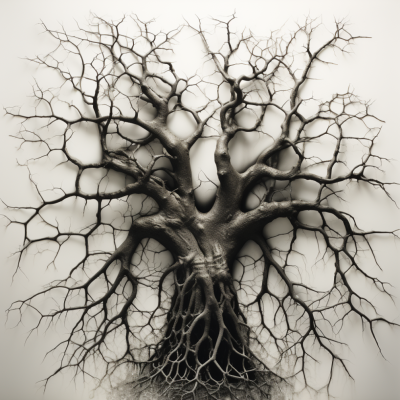
Roots
It's a dark and humid day in the underground. I feel the weight of the soil over my shoulders. An orchestra of steps, cars and trams rushing nowhere. I'm everywhere, hyperconnected, omnipresent. Needed but humble. Huge but hidden.The older I get the more I diverge. "Stay grounded" they say. So against all logic I split, I bifurcate, I open up. And as I open up I get more anchored, and I feel more stable. "Stay grounded" they say, so I diverge.
The older I get the more I tangle. "Get to the root of it" they say. But roots are no simple things, and they are not straight forward. I'm like a pair of old headphones that have been in the backpack for way too long. I'm an entangled mess, rich and complex. Undefined
The older I get the further I travel. My body is far-reaching, expansive. My edges are kilometers away from the tree that saw me grow. "You have no roots" they say. But they are wrong. The longer the roots the further away you can be from home.
It's a dark and humid day in the underground. Today I feel like breaking through.
( 46 )
22/09/2023
# Critical Issues
Week 3 - Part 2
During a part of the class we had to go outside and spent time in an environment, and reflect on how this environment affect us and how do we react to it, among other things. When I went outside to the forest I felt good, cold but good. The fresh air and the light is crucial. It’s interesting to explore how I react to nature, and we already know nature has positivity effects in our wellbeing. But it’s also interesting to reflect on how nature reacts to me. Or going even further and removing myself from the centre of every interaction, how is nature reacting to itself or other’s.I started by switching the focus of the task to discover the hidden interactions around me. I tried to switch from ego to eco. How is the space experiencing me as I move through it? The stones beneath my feet hold my weight without complaining. They do it collaborate, distributing each gram among the community. The plants observe me and everything else around them with no judgments or expectations. They breath out oxygen that I later consume, The oxygen surrenders to the sucking force of my lungs, and travels down my bronchias reaching my cells, feeding my muscles. The green matter that surrounds me is not demanding anything from me. I can’t help but to feel grateful.
( 45 )
21/09/2023
# Critical Issues
Week 3 - Part 1
As a preparation for this session we read a text called The potential of orienteering for arts-based research as a means to rethink transformative learning for sustainability.The text reflects on the power of orienteering. I didn’t know the term, and less did I know it was a sport, with a systematic protocol that consist on find your way across a forest or a natural landscape, writing reflective journals and taking photographs. This activity combined with post-humanist and eco-critical theories result in a subjective experience and a sense with connection with nature that is much needed in our current times.
In the context of learning, this is obviously a transformative learning method, that examines the relationship not only with others (human and non-human entities) but also with ourselves in times of challenges and vulnerability, confusion or discomfort. In this context the forest becomes the teacher.
An interesting concept we learnt during this class what the one of ego as apposed to eco. The ego puts the human outside (and on top) with a sense of superiority and exceptionality. We can examine and renegotiate the human condition towards an ecological view that places the human inside and as a part of an ecosystem, revisiting the relationally and the coexistence with it.
( 44 )
20/09/2023
# Critical Issues
( 43 )
18/09/2023
The amount of information I'm soaking (or trying to soak) is overwhelming. Post-humanism, trans-humanism, new materialism, coallision, power and ethics, anti-humanism, neo-post-anti-radical-environmentalism... Interactivity, performativity, sustainability, interseccionality, generativity, bio-technology... feminist theory, queer theory, quantum theory, cyborg manifestos, fluxus manifesto.
Kinda crazy."Today, we live in an optimisation society in which everybody must optimise themselves, to be and have everything, all of the time" — Antoinette Rouvroy( 43 )
18/09/2023
Reflection on Prompt: The Death of Marat - Fake story
I made up a story about this paiting and read it (with a bit of improvisation and acting) in the class. The people that didn’t know the real origin of the painting fully believed everything I said. Even the people that knew started doubting their knowledge.It made me thing about fake news and how quickly this can disseminate. It can also relate to the tone and speeches of political figures as they exercise their power over the hopeful population hungry for change.

( 42 )
16/09/2023
# Critical Issues
Week 2 - Part 2
The concept of power, in my opinion, is closely related to the concept of privileges. I starting paying more attention to power dynamics since I started acknowledging my own privileges (and with it my own oppressions). If we think about how much power is embedded in different situations of our daily life we will realise it's fully attached to most interactions, at least to some extent. All of our identity "labels" carry an associated power level. If I'm a man, I might already have a certain power over 50% of the world's population. If I'm hetero, European, white, educated, rich, strong, physically able... The power of privilege.We were asked to reflect on a situation when we "felt power as it happened”. The answers we get are dark. So is the abuse of power. It’s easier to identify power abuse as executed by others, but it’s a bit harder to think about when we have abused it ourselves. As I’m oppressed in certain situations I’m certainly also privileged in others. And with that privilege it comes the power. It’s important to self-reflect.
It’s also important to recognise the power structures instead of neglecting them. It’s more dangerous to pretend that they are not there than to recognise them and work together towards flattening them. Power is not bad per se, but it can become bad if it’s disproportionate and abused, or when it benefits only a few and harm others. I can see two ways of neutralising harmful power structures, the first one is by exercising radical empathy:
"With our current ruptures, it is not enough to not be racist or sexist. Our times call for being pro-African-American, pro-woman, pro-Latino, pro-Asian, pro-Indigenous, pro-humanity in all its manifestations”. Isabel WilkersonBy exercising radical empathy we can help neutralise the power structures that are embedded in our own privileges.
The second one is at the very core of this course, and it’s about exposing, facing and dismantling the power dynamics and structures by being critical of them, so that they become accountable for how they use the power they own.
( 41 )
15/09/2023
# Critical Issues
Week 2 - Part 1
We started the class by thinking about a normal situation, where a person is heading somewhere abroad by plane. “Where is power lurking at the airport, how does power manifest itself in this particular context?” We quickly realised power dynamics are everywhere. You let yourself be touched and inspected by the security guards, the way in which this happens often varies depending on your ethnicity. The flight staff have the power to leave you behind, if your document is not up to date, if your visa is not good enough, if you are late. There’s the power of the architecture, forcing you to go through the duty-free where you are exposed to a thousand products. There’s the power of surveillance, recording your movements as you go through the building, and so on and so forth.
What is power anyways?
Academically there are 2 big approaches. The great normative tradition is a rational way of organising power in society. We have a certain order of power, for example we have God, and we have the humanity, where the power is structured under a clear binary (Powerful - powerless).There’s also the critique of the normative, a power theory derived from Machiavelli’s that describes a more messy power structure, one that is more realistic or accurate even when we understand the complexity of human (and non-human) relations.
The 4 faces of power
(1) Coercion: it’s a causal power, where one individual gets another to follow their orders. This power is situational, meaning one individual may have power in certain situations but not others.(2) Manipulation: Agendas behind the scenes. Decisions and non-decisions. An individual make another to follow their wishes but without them knowing or actively noticing.
(3) Domination: Domination over the preferences and opinions of participants.
(4) Subjectification: It’s the most hidden kind of power. It produces the kinds of people we feel we “naturally” are. Operations of power are internalised.
( 40 )
14/09/2023
# Critical Issues
Reflection on first prompt: Remember to eat
To think about the ingredients, the smells, the process. To analyse the politics of food. To trace the origins of the vegetables. To think about the production-line. Who benefits? Who looses? To eat consciously, slowly, thoughtfully. In a hyper-capitalist world where "faster" is always better, to take the time to perform daily tasks peacefully is an act of resistance. Slow-design, slow-making… Slow-doing is also a privilege. Provoke productivity. Take a day off. Connect to your senses, listen, see, touch, taste, smell. Be present. Be aware. Remember through your body the embodied memories.Olor
a
marraqueta
( 39 )
13/09/2023
# Critical Issues
Week 1 - Part 2
Being critical, for me, means to live in a constant state of challenging even the most stablished assumptions. Doing this can certainly be exhausting. But it can also be extremely rewarding as we understand we are dismantling the anatomy behind injustice, inequality and violence.Being critical, for me, most often means starting with one-self. Being self-critical? Dismantling my own paradoxes, inconsistencies and lies.
Being critical, for me, also means being comfortable in the chaos. Learning to break oneself, and observe the pieces as an opportunity to rebuilding a better version.
Being critical, for me, means also being kind. It’s not about finding the one truth, it’s about seeing the value and biases in different perspectives.
It’s important to be critical on blurred topics, where there’s no commonly accepted right or commonly known wrong. But it’s even more important, in my opinion, to be critical about things that are presented to us as absolute. Opinions presented to us as facts can be more dangerous than any other combination in the matrix. In this context, being critical of social sciences like history and acknowledging the human biases embedded in them is a part of being critical.
Historical research is not without biases. The researcher that examines the past and "writes the history" will always imprint their personal biases, dictated by their values, their context and the temporality in which the research is made. The historical research is a mirror, and says more about the present than it says about the past. It's not the content but what lead us to understand something as "historical". Which stories do we record? Who is speaking? Who is being heard?
Critical and Crisis share the same etymological root. Kríno. To decide, to separate. Being critical is putting the object of criticality in crisis, but it's also putting ourselves in crisis. It's confronting the "present" and realising it's indeed dark, unknown, unstable. And from the darkness, almost blindly, try to aim for the truth. In that context there's no choice but to be critical.
Following this train f thought I wonder what’s the limit of criticality. Can criticality, if taken to an extreme, turn us into cynics as an extrapolation of skepticism. But we won’t be cynics if there’s hope. If we trust we can do better as a society, if we keep a constructive approach, were we dismantle not just to destroy but to reconstruct a kinder and more just society. How do we cope with the uncertainty? First, through collectivity. And second, by understanding that crisis, as well as criticality is not necessarily a negative, but an opportunity to rebuild, rethink and restructure. To break apart without falling apart.
Ref: Studying in the Dark: Notes on Poetic Historiography for Art Education, Tervo.( 38 )
07/09/2023
# Critical Issues
Week 1 - Part 1
I attended the first class with the intention of withdrawing from the course. As much as the topic interested me, I thought the workload was too much for the first period. Coming back to university after years of being out, takes courage and can be scary. As I grow older I naturally become less reckless and more cautious, and I’m afraid I won’t be able to push myself as hard as I used to.The teacher, Astrid, started the class by setting the line for the course. She wrote on a slide:
“…I seek to rethink my own privilege and teaching practices…I work against racism and sexism in the classroom. I think critically about the readings I include in my courses to offer diverse voices and viewpoints. I include writings by non-white, non-Western, non-cis, other-than male professors in my course readings.Throughout, I think of the classroom as a location of possibility, diversity and inclusion”.So I didn’t withdraw.
“The classroom, with all its limitations, remains a location of possibility. In that field of possibility we have the opportunity to labor for freedom, to demand of our selves and our comrades, an openness of mind and heart that allows us to face reality even as we collectively imagine ways to move beyond boundaries, to transgress. This is education as the practice of freedom.” bell hooksAn environment needed to “learn" is quite different as one needed to “unlearn”. Unlearning can be a painful process, but it’s certainly easier done in a collective environment, observing role models that seem in peace as they embrace the paradoxes and challenges of the world and decide to live, work, and act in a way that challenges those structures.
For unlearning, criticality becomes crucial. But what does it mean to be critical? What am I critical of? How do we decide what’s critical.
( 37 )
06/09/2023
# Critical Issues
I grew up in a traditional and wealthy family in Chile. For more than 20 years I believed everyone acts in their own personal interest, capitalism and liberal market equals freedom, homosexuality is unpreferred, anyone can be rich if they work hard enough, there’s only one truth and one God, being skinny is better than being fat, and not having kids is a selfish choice.
After deeply internalising these beliefs as any child-teenager would do, there was an inflection point when I turned 25 and understood these beliefs didn’t align with my own values. I didn’t know what “my own values” were, but I could feel they weren’t those. So I started a revolution from within and left Chile on my quest to find them.
I then realised I needed to make space for my own beliefs to arise, but my vase was already filled up with absolute truths and recycled arguments. The process of unlearning became my biggest task and sorrow. Unlearning can be hard, because as you get rid of those comfortable truths, and until you fill up your vase again, you feel empty. But it was also a necessary thing to do.
This course contributes from the authority of academia to re-fill that vase, but this time not with rock-solid truths, but with fluid, complex, and ever-changing possibilities, that are and will be under constant scrutiny and criticality.
( 36 )
05/09/2023
# Critical Issues
( 35 )
04/09/2023
Contemporary objects
The aesthetics of under-determination.
Today I read about this research approach that suggest that, because the objects of research are now beyond complex, and classic epistemology cannot cope with these levels of uncertainty, it might be necessary to create smth called a "integrative object". Integrative objects work as a placeholder of an object, an object "x" in an equation of relations that allow to unvail the impossibilities of an incomplete object that is treated as real or complete.
Reminded me to the concept of intersectionality in sociology. Beyond complex.( 35 )
04/09/2023
( 34 )
04/09/2023
First day in the MA.
Talked about the relationship between sports and war with a classmate.
Agree/Disagree:
- Guns (D)
- Shooting with guns (D)
- Shooting with guns as a sport (D)
- Shooting with bow as a sport (D?)
- Throwing javelin as a sport (A?)
- Throwing a frisbie as a sport (A)( 34 )
04/09/2023
( 33 )
03/05/2023
I haven't had time to do the 36 days of type thing. Life is change. Constant change. That I know and I'm ok with it. But this is, how my mom says, "un poquito too much".
( 33 )
03/05/2023
G and H - I've noticed I don't quite like perfect shit anymore. I like the organic, the analog, the natural, th raw, the scrached the glitch.
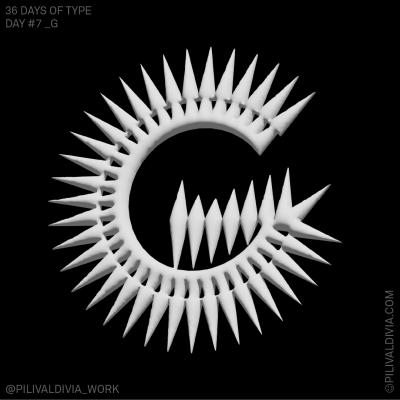
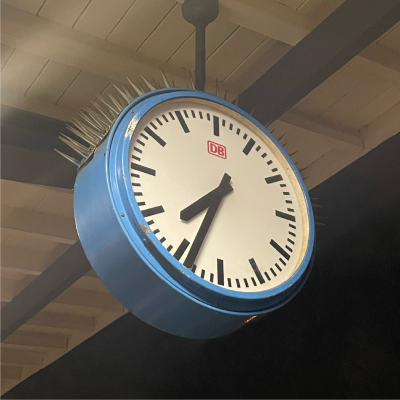
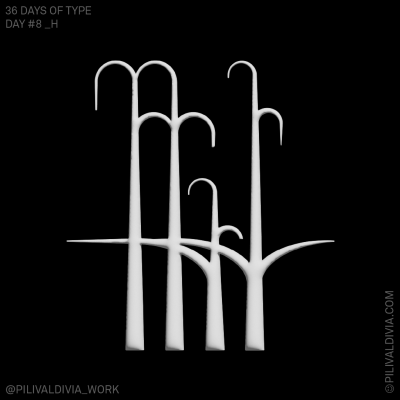
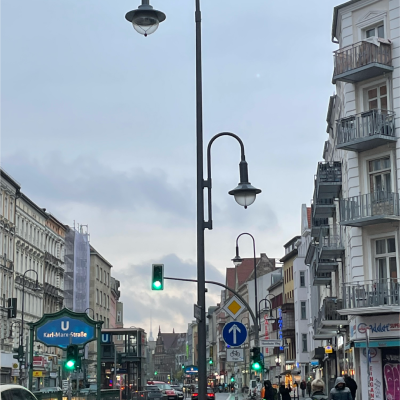
( 32 )
18/04/2023
# 36 Days of Type
Nature is awesome. As much as I wanna notice other stuff, the shapes of the leafs have so much to offer.
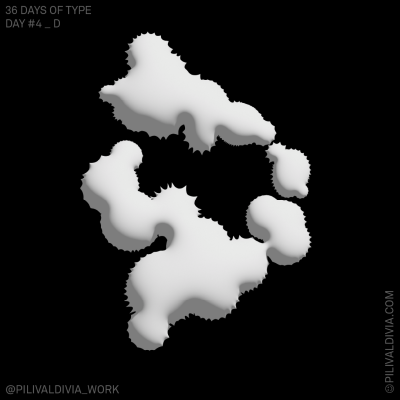

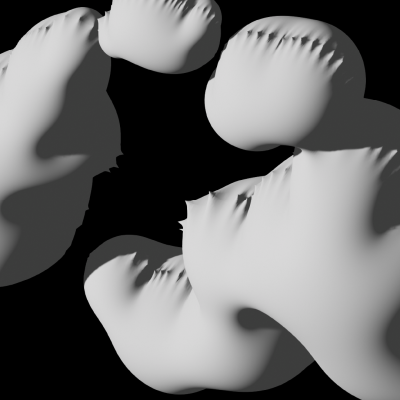
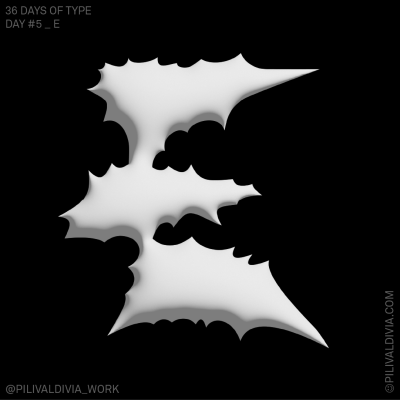
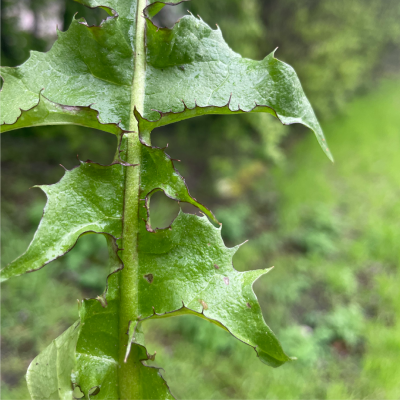
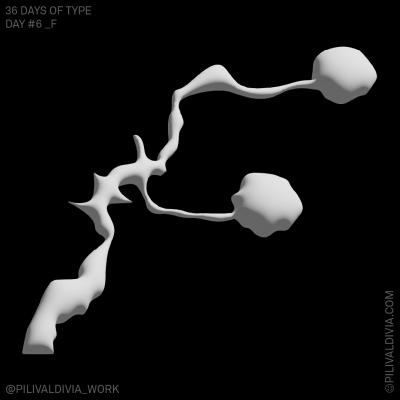
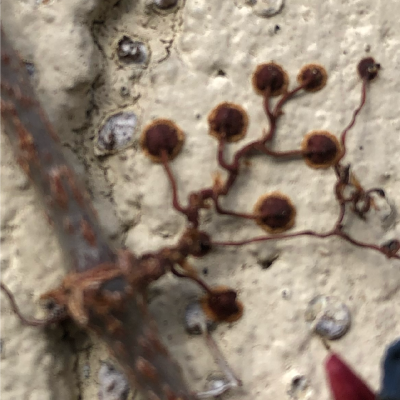
( 31 )
15/04/2023
# 36 Days of Type
First bulk of 36 days of type.
Trying to find inspiration in everyday stuff. Keeps my mind in the present time-place. Aware.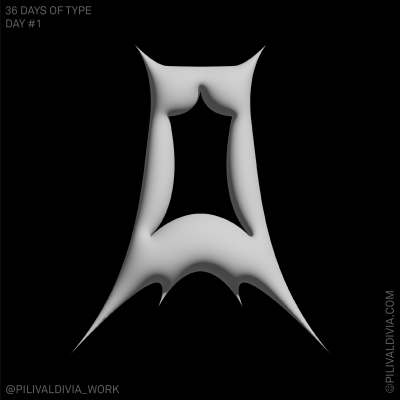

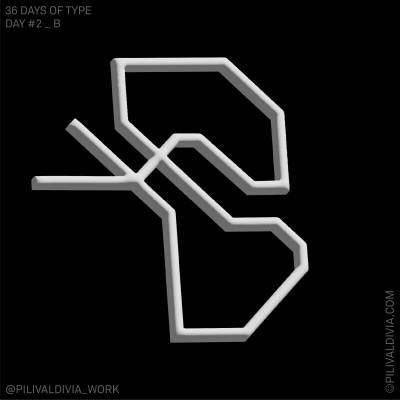

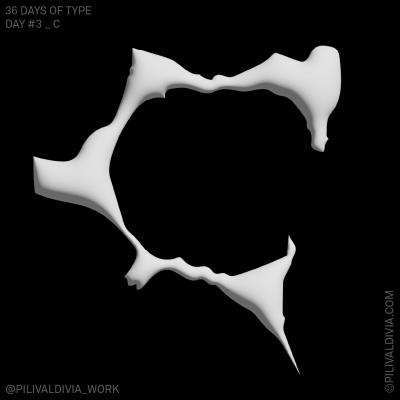

( 30 )
12/04/2023
# 36 Days of Type
About the speculative design book Speculative Everything:
Once designers step away from industrial production and the marketplace we enter the realm of the unreal, the fictional, or what we prefer to think of as conceptual design—design about ideas. It has a short but rich history and it is a place where many interconnected and not very well understood forms of design happen—speculative design,1 critical design,2 design fiction,3 design futures,4 antidesign, radical design, interrogative design,5 design for debate, adversarial design,6 discursive design,7 futurescaping,8 and some design art.For us, this separation from the marketplace creates a parallel design channel free from market pressures and available to explore ideas and issues. These could be new possibilities for design itself; new aesthetic possibilities for technology; social, cultural, and ethical implications for science and technology research; or large-scale social and political issues such as democracy, sustainability, and alternatives to our current model of capitalism. This potential to use the language of design to pose questions, provoke, and inspire is conceptual design’s defining feature.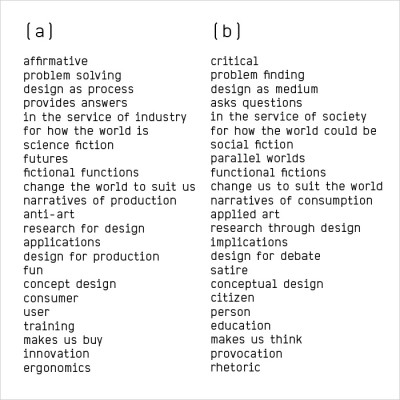
( 29 )
05/04/2023
# Diseño y Anti-diseño
Peligros y daños causados por la heteronormatividad en lxs niñxs:
La heteronormatividad se refiera a la idea de que la heterosexualidad es la norma o la única orientación sexual natural y de que las identidades de género binarias son la única alternativa válida o la preferida. Cultivar o aceptar sin reparos un ambiente heteronormado puede generar graves daños en el desarrollo de lxs niñxs:
(1) Producir exclusión o discriminación. Puede llevar a que niñxs que no se ajustan a los roles de género tradicionales o que se sienten (o sentirán) atraídos a personas de su mismo sexo se sientan excluídos o discriminados. Esto conlleva al sentimiento de verguenza, aislamiento o baja autoestima.
(2) Puede limitar la comprensión holística de los niñxs respecto al género y la orientación sexual. Al reforzar ecosistemas heteronormados se hace más difícil para los niños entender, aceptar y respetar la diversidad de experiencias humanas y de identidades.
(3) Puede conducir a bulling o acoso. La heteronormatividad puede contribuir a una cultura de bulling, particularmente hacia niñxs que son percibidos como diferentes o disidentes. Esto puede tener serios efectos negativos en la salud mental y bienestar de lxs niñxs.
(4) Puede desanimar a lxs niñxs a explorar sus propias identidades. Puede crear un ambiente en el cual lx niñx se siente presionado a encajar el los roles tradicionales de género y de orientación sexual. Esto puede desanimarlos a explorar su ser auténtico llevando a problemas de conocimiento propio, crisis de identidad y existenciales.
Es importante crear un ambiente seguro e inclusivo para lxs niñxs, donde puedan explorar libremente sus identidades y sentirse aceptados. Esto incluye desafiar la heteronormatividad y promover una comprensión más diversa e inclusva de la identidad de género y de la sexualidad.( 28 )
23/03/2023
# Queer
( 27 )
16/03/2023
Novedades - Desiluciones - Expectativas - Aburrimiento Perseverancia - Compromiso - Sangre - Sudor - Lágrimas - Aliento - Rencor - Partida - Pálida - Cuchara( 27 )
16/03/2023
( 26 )
10/03/2023
I think we are sharing this new website on ig today. If you came here to see, let me explain:
(1) This is my diary. It's is for me but it is public. Is that a paradox?
(2) I try to write an entry every day. This is today's entry.
(3) I can put hashtags on the entries to clasify by threads.
(4) I can "filter" and choose if I want to see only text, only images, only quotes.
(5) If you click on the top right corner "i" you go to my info.
(6) Let's connect
- It's like instagram.
- Yes... but no.( 26 )
10/03/2023
( 25 )
08/03/2023
I've been busyaf with all the apps. Finally submitted everything. Here're some slides from my submission to Aalto University. A bit rushy, but still worth documenting:

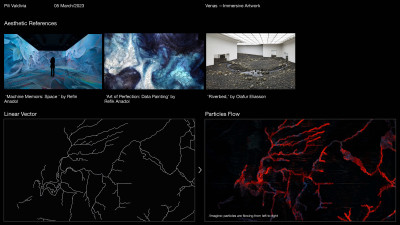
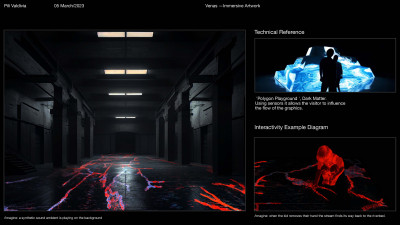 Venas is an interactive and immersive artwork that visualises the changes of 5 of the main Chilean rivers over the last 400 years. It uses the David Rumsey collection as main source, geo-correcting old maps to identify the evolution of the rivers Mapocho/Maipo, Loa, Aconcagua, Bío-bío and Valdivia. A computer is trained to identify the river path on these images and to create vector-based timelapses. This visual data is then processed through specific stylistic parameters, giving it a fluid-looking particle aesthetic. In a perpetual loop, these 5 timelapse-videos are projected on the floor of a museum/gallery room, using 360° mapping technology. The visitor can affect the paths of these “veins” via sensors, and can deviate or even stop the flow of the particles using their bodies and gestures, symbolizing human agency and influence. The timelapse will smoothly continue its original path when the visitor ceases their physical intervention.
Venas is an interactive and immersive artwork that visualises the changes of 5 of the main Chilean rivers over the last 400 years. It uses the David Rumsey collection as main source, geo-correcting old maps to identify the evolution of the rivers Mapocho/Maipo, Loa, Aconcagua, Bío-bío and Valdivia. A computer is trained to identify the river path on these images and to create vector-based timelapses. This visual data is then processed through specific stylistic parameters, giving it a fluid-looking particle aesthetic. In a perpetual loop, these 5 timelapse-videos are projected on the floor of a museum/gallery room, using 360° mapping technology. The visitor can affect the paths of these “veins” via sensors, and can deviate or even stop the flow of the particles using their bodies and gestures, symbolizing human agency and influence. The timelapse will smoothly continue its original path when the visitor ceases their physical intervention.( 25 )
08/03/2023
Gotta put the podcast production on hold. These application thing is mad. I got an email from Aalto University now saying that I'm in the shortlist. I have to write a full essay and do a creative task and have no time. Podcast will have to wait. Bye
( 24 )
24/02/2023
# Diseño y Antidiseño (Podcast)
( 23 )
16/02/2023
I got accepted in the Royal College of Art. If you want to pay for my education plis CLICK HERE
( 23 )
16/02/2023
( 22 )
15/02/2023
All the deadlines for the masters applications are coming to me. I'm still trying to figure out if it's worth the money or if its only worth it with a scholarship. Help
( 22 )
15/02/2023
- 10 examples of internalised misogyny: (1) Saying things like: "I'm not like the other girls". (2) You constantly find ways to tear down successful women. (3) You hate your partner's ex. (4) Judging a woman for their sexual activity, calling them slut or bitch. (5) Saying "she is so bossy, she is intimidating..." (6) Judging other women on their appearance. (7) Judging other women who pay for aesthetic procedures. (8) Saying things like "She looks good for her age". (9) Using "he/him" pronouns to refer to an unknown powerful individual (who's gender you don't know), and "she/her" to refer to service workers (who's genders you don't know). (10) Thinking a girl should "cover up" because she can provoke men. - Women don't owe you pretty (Florence Given)
( 21 )
14/02/2023
# Feminism
I find the history of the word "queer" so interesting and beautiful. The fact that it has its roots in the history of queer oppression, and that it was first used as "weird" or "strange" in the 16th century and then to insult or offend homosexual people in the 19th century is obviously terrible. But there's such a beauty in the way the community reclaimed the term in the 80s to describe their own identity. There's a power to it that, in my pov, comes from the very fact of it being reclaimed. Is like a "you don't get to offend me bitch, you don't have that power because i don't give it to you".
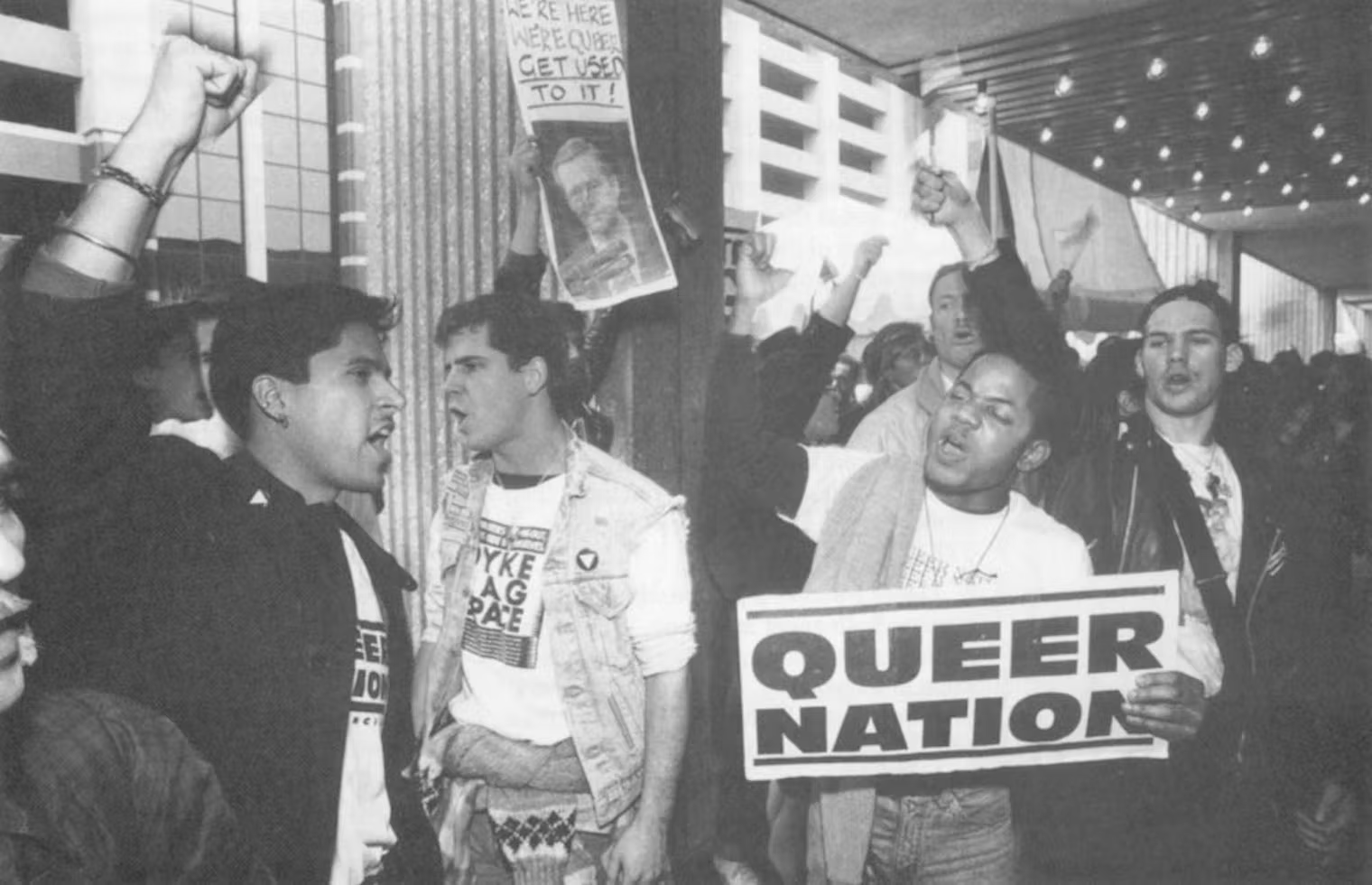
( 20 )
13/02/2023
# Queer
Podcast Structure:
- Jingle (short)
- Hola y bienvenidxs al nn capítulo de Diseño y Antidiseño.
- Esta vez nos acompaña xxx (intro - presentación)
- Vamos a hablar sobre xxx (post edition)
- (Conversación) 1/2 > Práctica concreta
- Ads
- (Conversación) 1/2 > Práctica filosófica
- Closing (socials, contact, etc)( 19 )
10/02/2023
# Diseño y Antidiseño (Podcast)
( 18 )
09/02/2023
Finally making this website live!! Bang. Pedro is a king and working with him was 10/10.
( 18 )
09/02/2023
Just recorded the last episode of my podcast. Learnings:
- Remember I can always edit tracks independently
- Try to be 100% focus and write down interesting concepts to pick up when the guest stops talking
- One is easier than 2
- Almost anything can be linked looking backwards
- Start announcing the end before it comes so it doesn't come abruptly.( 17 )
04/02/2023
# Diseño y Antidiseño (Podcast)
( 16 )
29/01/2023
Go to the start And keep in your mind you've built a Home in your heart And with his home will you be given A freedom of your past?( 16 )
29/01/2023
( 15 )
26/01/2023
Writing a diary that is so clearly public opens up a very interesting dialogue within me. Is the fact that it's public influencing what I write? If so, how? Am I scared of writing some things because of what people may think? Am I scared of being disliked by someone or to miss on an opportunity because of what I think / who I am? How is this different from Instagram or Tiktok? How is it better? How could it be worse?
( 15 )
26/01/2023
( 14 )
25/01/2023
A few days without writing.
A bucket is hanging from my balcony.
Next moves depend on my master application. Prolly won't know until March.
Either I get in or not.
Either I get a scholarship of not.
Either I stay at my job or not.
Either I stay at my place or not.
Either I stay in Berlin or not.
Other things are certain and others seem immutable.( 14 )
25/01/2023
Friday. Just did some sketches for the cover of my podcast-to-be "Diseño y Antidiseño":
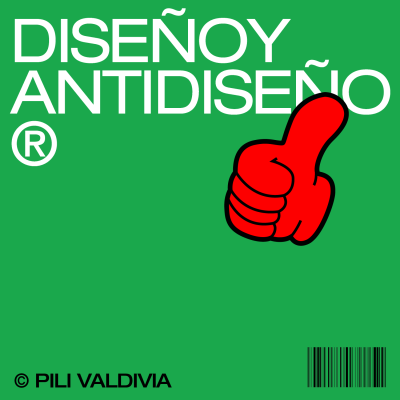
Also started drafting some of the concepts around it, smth like this:
"DYAD es un podcast de conversaciones en español que destaca talento creativo latinoamericano y reflexiona sobre el desarrollo del diseño del hemisferio sur desde una perspectiva especulativa, crítica y desconolonizadora. Busca además inspirar a futuras generaciones al pensamiento crítico y al diseño responsable, sustentable y social."( 13 )
20/01/2023
# Diseño y Antidiseño (Podcast)
I've been planning on doing a podcast called "Diseño y anti-diseño". The idea would be to invite chilean and spanish speaking designers to talk about design from a social, anthropological, philosophical and idealogical pov. Explore what's the role of the designer and how they cope with their contradictions and limitations.
( 12 )
19/01/2023
# Diseño y Antidiseño (Podcast)
( 11 )
18/01/2023
Everything is chill
( 11 )
18/01/2023
( 10 )
15/01/2023
I've been reading this book called CAPS LOCK by Ruben Pater, trying to explore this idea of what can it mean to be a designer outside of consumerism. He identfied four different roles for the designer that exist outside of the capitalisation of design: (1) Designer as a hacker, (2) designer as a futurist, (3) designer as a philanthropist and (4) desiger as an activist.
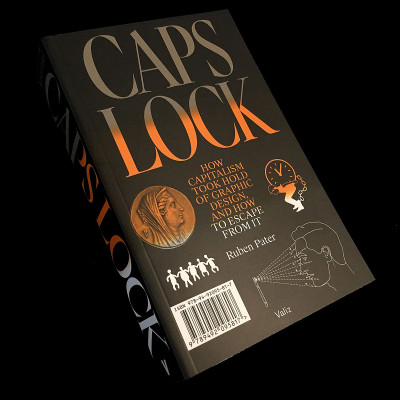
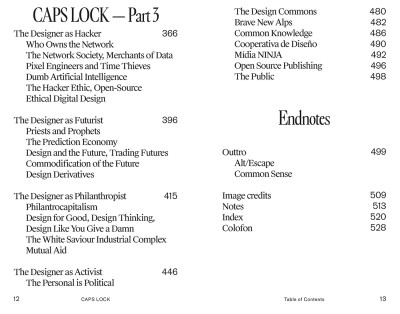
( 10 )
15/01/2023
Design and Anti-design Exercises (part 3):
31. Design that contains intentional mistakes
32. Design that is vulgar
33. Design that is an irony / joke / contains dark humour
34. Deisgn that destroys a way of seeing the world
35. Design that is critical yet hopeful( 9 )
12/01/2023
# Diseño y Anti-diseño
Design and Anti-design exercises (part 2)
16. Design that is ment to die immediatly
17. Design that is ment to last forever
18. Design that comes from my own latin cultural background
19. Design that comes from my own social background
20. Design that is 100% sustainable
21. Design that uses a real life element as a main reference
22. Design that is 100% handmade
23. Design that takes way too long to create
24. Design that is irreverent / sceptic
25. Design that is not legible
26. Design that is not cliché
27. Design that is made using only found objects
30. Design that illuminates a problem of human existence( 8 )
11/01/2023
# Diseño y Anti-diseño
( 7 )
09/01/2023
I have spent most of my break time reading the designthreads report from Porto Rocha and Wix Playground. I think it has a lot to do with anti-design. Or just with a more mindful and purposeful way of understanding design and visual culture.
Although the scale of the issues we face is overwhelming, hopeless civic depression doesn’t get us any further than toxic positivity. As in any creative field, hope is essential to inspiration; coming up with brilliant ideas and designing them requires that fuel. The attitude many designers are adopting lands somewhere in the middle of the positivity-doom spectrum: a critical optimism that starts with interrogating design’s role in the systems we want to change. — Design Threads( 7 )
09/01/2023
I created a first draft of a list of "Design and anti-design exercises" (part 1).
1. Design that doesn't do it's job
2. Design that doesn't call your attention
3. Design that is not human-centric (posthumanism)
4. Design for a machine (posthumanism)
5. Design that doesn't visually contaminate
6. Design that exist outside of consumerism / materialism / capitalism
7. Design that doesn't follow german/swiss/european design principles
8. Design that is not pleasant nor attractive
9. Design that is mono-directed (speaks only to one person)
10. Design that uses "bad taste"
11. Design that is financially absurd
12. Design that laughs about itself
13. Design that laughs about myself
14. Design that is social
15. Design that unmasks a human contradiction( 6 )
08/01/2023
# Diseño y Anti-diseño
( 5 )
07/01/2023
Today I turn 29. I only wanted a blue sky, and I got a blue sky, so much love from friends and family a great day and a fun celebration. I feel blessed.
( 5 )
07/01/2023
I started the year thinking of anti-design. I'm sure one lead to define it is to think about design from outside of the predominantly white, Western perspective. The definition of design has been given by a small selected, homogeneus group and anti-design should mean something different. Where what's bad or good doesn't respond to a grid system or some static modernist tradition.
A nice excersise might be to study design history and identify when it became full of bullshit :)( 4 )
05/01/2023
# Diseño y Anti-diseño
- Eng: However, Parra shows an indisputable coherence (...): that of his anti-poetic vision, that of his critical humor, which denies him any commitment other than unmasking. His mission is not to overcome contradictions, but to make them visible, wherever they are. Hence, antipoetry is essentially impertinent, subversive.Sin embargo en Parra hay una coherencia indiscutible (...): la de su visión antipoética, la de su humor crítico, que le niega otro compromiso que no sea el desenmascaramiento. Su misión no es la de superar las contradicciones, sino hacerlas visibles, estén donde estén. De ahí que la antipoesía sea por esencia impertinente, subersiva.
( 3 )
03/01/2023
# Diseño y Anti-diseño
- Entonces Parra empieza a desarrollar una "cosmovisión" y una concepción del poema fundada en la ruptura con la tradición, en el cuestionamiento de sí mismo como estructura y como lenguaje. (...) Partía de la base que lo único que se espera de un poema era que produjera algunos textos entretenidos, simpáticos, graciosos, independiente de la originalidad o de la cosmovisión. No sabía que se esperaba una cosmovisión de un poeta.
( 2 )
02/01/2023
# Diseño y Anti-diseño
- El tema del paraíso, del hombre caído y despojado, no sólo está presente en la antipoesía. Aún más: en la demolición del lenguaje "poético", de la estructura del poema tradicional, de los mitos de la cultura burguesa, hay una petición sufriente e implícita de unidad.
( 1 )
01/01/2023
# Diseño y Anti-diseño
